Absolute Ruler
Who Fell Victim
to Tomb Raiders

COLIN SIMPSON

Emperor's Concubine
Became Supreme
Leader of 400 Million
at the End of China's 4,000-Year Feudal Era
Eastern Qing Tombs, Zunhua, Hebei province. Chinese Name: 清東陵
IT’S ONE of the first of many memorable scenes in Bernardo Bertolucci’s sumptuous epic The Last Emperor. An elderly woman with a powdered, lined face, unfeasibly long nails and a Pekingese is seen on her deathbed.
With her last few breaths she tells the toddler Puyi that he is to become the new ruler of China, thus beginning the remarkable story told in the multi-Oscar winning movie.
The dying woman is the Empress Dowager Cixi, an extraordinary figure in the history of China who ruled over the country’s 400 million people as the feudal era neared its end. The one-time imperial concubine rose to become the country’s de facto ruler for 47 years from 1861 until her death. She was the last powerful figure in a tradition of dynastic rule that had lasted nearly 4,000 years, and when she died in 1908 aged 72 the death rites lasted a year.
She’s buried a couple of hours’ drive from Beijing, at the Eastern Qing Tombs. Most Western visitors to China’s capital visit famous attractions such as the Great Wall, Tiananmen Square and the Forbidden City, the Temple of Heaven and the Summer Palace. Though less well known, the Eastern Qing Tombs are equally spectacular.

Anyone who’s visited the Forbidden City – or seen The Last Emperor – will know that it’s enormous. But the tombs site, at 80 square kilometres, is a remarkable 111 times as large, or equal to 11,204 football pitches. Everything in China seems big, but this is ridiculous.
The complex includes the graves of five Qing Dynasty emperors, and also buried there are empresses, concubines, princes and princesses. The emperors started work on their tombs soon after taking the throne, and the grand, ornate buildings were an expression of their power.
The site is included on the Unesco’s World Heritage List along with other tombs from the Ming and Qing dynasties. Unesco describes them as “masterpieces of human creative genius”. The whole place is laid out according to the rules of feng shui, and the surrounding mountains provide an imposing backdrop.
Burials of Emperors
There is a second major Qing tombs complex to the west of Beijing, though it’s smaller and less complete than the eastern one. In most cases, burials of emperors alternated between the two sites.
We were taken aback by the size of the eastern compound. There are 15 mausoleums and 586 individual buildings. By the time we’d explored two or three of the tombs and walked around a small part of the site we found ourselves running out of both time and leg power.
Our driver had dropped us off close to the mausoleum of the eighth Qing emperor, Xianfeng, so we started there. The grander tombs consist of several buildings, many of them strikingly beautiful.
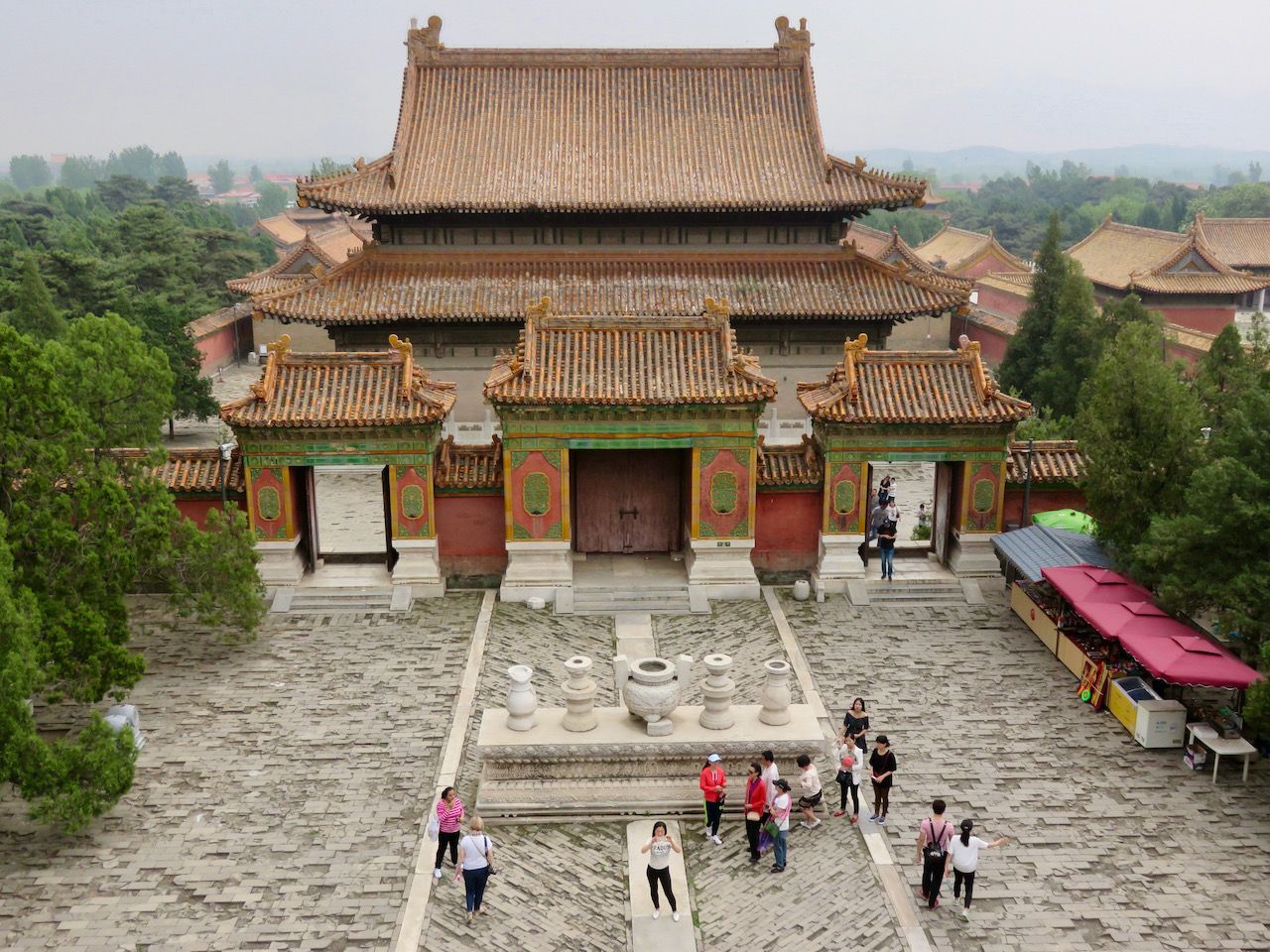
The most imposing of all is that of Shunzhi, the first Qing emperor to rule the whole of China. It’s worth planning your trip to make sure you leave time to see this one. Shunzhi’s compound stands at the end of the Spirit Path, a wide roadway lined on either side with statues of warriors and animals.
Sheep, watched over by attentive shepherds, help to keep the grass down across the site. We took a picnic, and sitting down to eat gave us a welcome break from walking. Chinese visitors, apparently unfamiliar with the alfresco dining concept, looked on intrigued.
Often in China, people approach Westerners and ask to have their picture taken with them. Sue’s blonde look attracted particular interest, perhaps not surprisingly in a country where 1.3 billion people have been born with black hair. At the tombs, a whole family wanted a picture.
Air Felt Damp
Afterwards we made our way to Cixi’s grave, one of a few where the burial chamber is open to the public. You enter through a tunnel, at the end of which is a large coffin encased in glass. The air felt damp, and the stone walls were disfigured by patches of green mould. There was something gloomy about the place that meant we were glad to leave.
The grave was the scene of an event in 1928 that scandalised China. Troops loyal to a warlord dynamited their way in during a large-scale looting of the tomb complex. They removed the many valuables that had been buried with Cixi, stripped her mummified body and took jewels and pearls from her clothes.
Returning to that early scene in The Last Emperor, when Cixi dies a large pearl is placed in her mouth. This actually happened, as required by Chinese tradition. During the robbery, the looters were said to have forced open her jaws and removed the pearl.
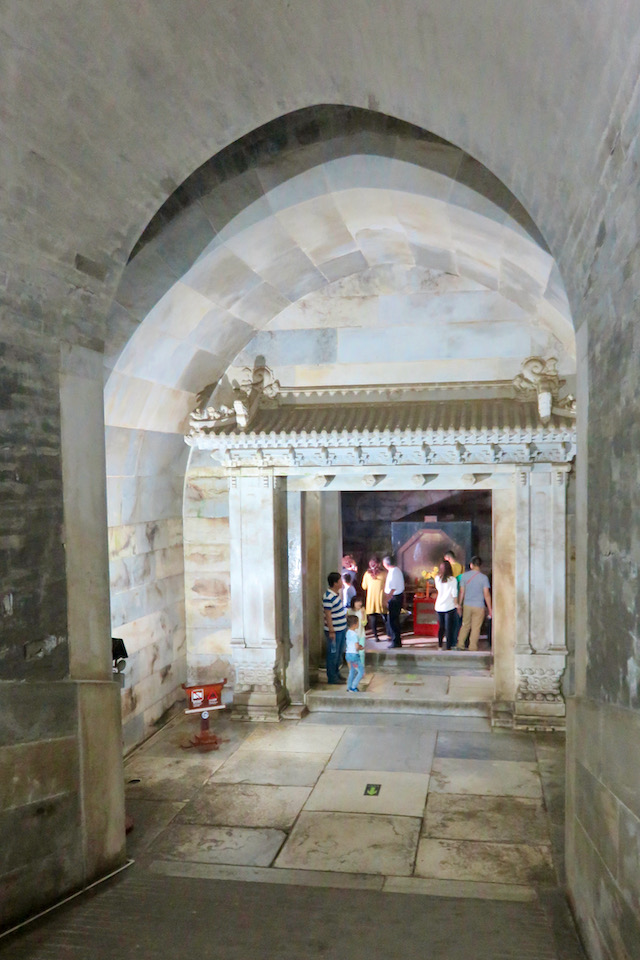

Afterwards a rumour circulated that the pearl was given to Nationalist leader Chiang Kai-shek’s wife, who wore it on her shoe. Puyi was so offended by this that he threw in his lot with the Japanese, eventually becoming puppet emperor of a state set up by Tokyo.
Perhaps the fact that I had read about the tomb raid accounted for the grim and gloomy feelings I had as I stood next to the coffin.
Items that belonged to Cixi are on show, including seals, calligraphy and an extraordinary purple and gold bamboo-patterned robe displayed next to a photo of her wearing it.
Blood-Thirsty Despot?
As for the legacy of Cixi (pronounced tsoo-shee), history’s verdict is mixed. Many regard her as a blood-thirsty despot, and the fact that she, for example, had an imperial concubine thrown to her death in a well tends to bear this out.
Others are kinder to her memory, seeing her as an enlightened reformer and, less plausibly, an early feminist. The Nobel Prize-winning novelist Pearl S. Buck, who wrote a fictionalised biography of Cixi, said “the peasants and the small-town people revered her”.
Wild Swans author Jung Chang risks being seen as an apologist in her otherwise excellent biography when she writes: “Compared to that of her predecessors, or successors, Cixi’s rule was benign. In some four decades of absolute power, her political killings – whether just or unjust… were no more than a few dozen.”
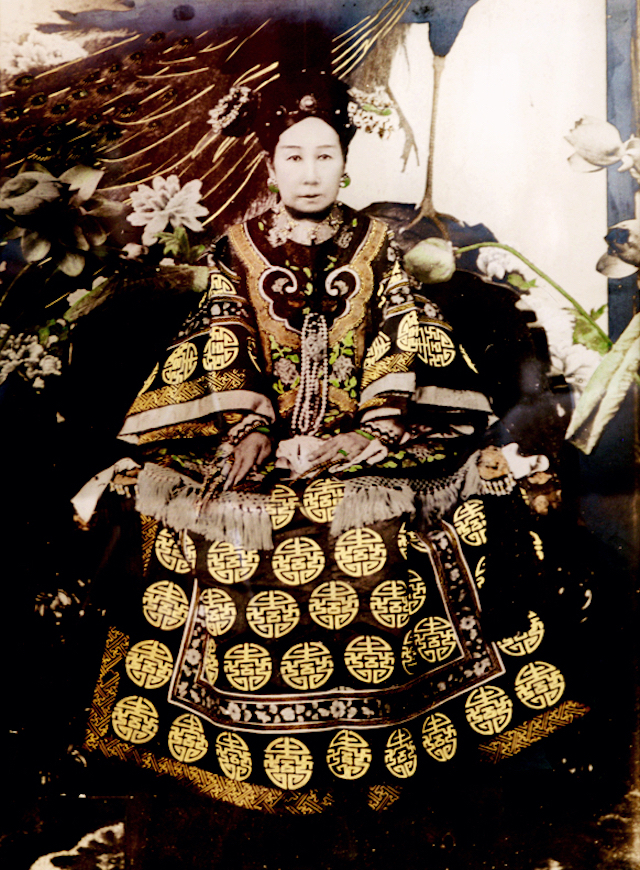
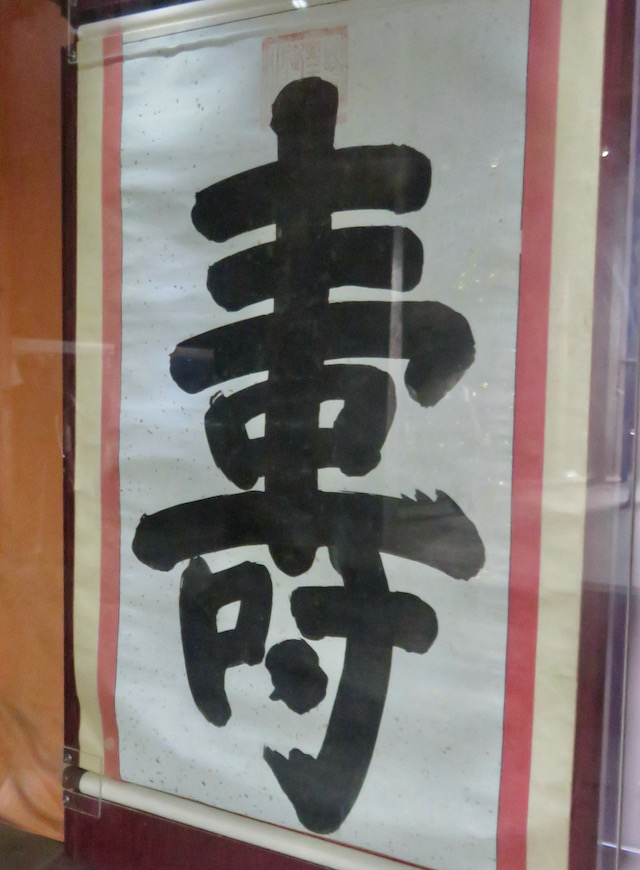
Sites in Beijing associated with Cixi include the Forbidden City and the New Summer Palace. At the Forbidden City, she “ruled from behind the curtain” when she held court, as it was deemed improper for a woman to be seen by men.
Cixi diverted money meant for the navy to expand and renovate the Summer Palace. Ironically, a waterside pavilion known as the Marble Boat was rebuilt as part of the project.
The elaborate clothes in which she was buried have been restored by the China National Silk Museum at Hangzhou, Zhejiang Province.
Verdict: Visiting the tombs makes for a fascinating day out, but take sturdy walking shoes.
Main photo: Cixi’s mausoleum. Portait is an oil painting of Cixi by court painter Hubert Vos/Public domain.
EXPLAINER: A Brief History of China
CHINA has a long, complex and often brutal history. But when I was growing up in the UK little was taught about it in schools. All that anyone knew of the Ming dynasty (1368-1644), for example, usually involved vases. So here’s a quick guide to 4,000 years of history:
For nearly four millennia, from 2070 BC, China was ruled by a succession of dynasties. In 221 BC it became a unified empire under the first emperor Qin Shi Huang (the one who was buried with the Terracotta Army in the city of Xi’an). He founded the Qin dynasty and began the construction of the Great Wall, work that continued for the next 1,800 years.
British schoolchildren are taught about the Roman empire. At its peak in 117 AD it covered 5 million square kilometres; the Chinese empire at that time extended across 6.5 million square kilometres, and eventually grew to 14.7 million square kilometres.
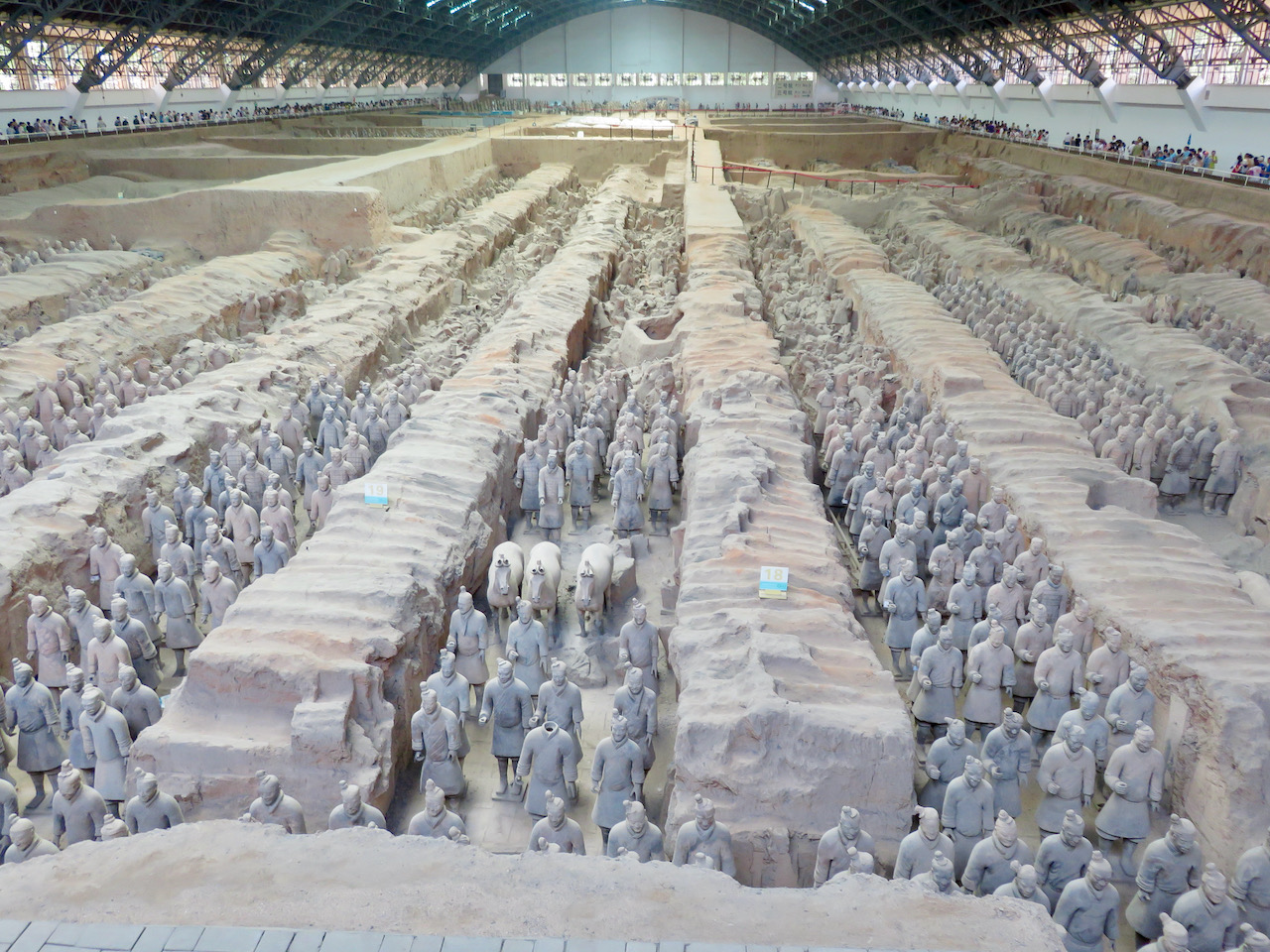
From 1839, China suffered what is known as the century of humiliation as it faced encroachment and subjugation by the Western powers, plus Japan and Russia. The final dynasty, the Qing (pronounced Ching, 1644-1912), ended with the abdication of the last emperor, Puyi.
China became a republic and was in time plunged into a civil war between Mao Zedong’s Communists and Chiang Kai-shek’s Nationalists. In 1949, the Communists won and created the People’s Republic of China. The Nationalists retreated to the island of Taiwan where they established the Republic of China – the similarity of the names causes confusion to this day.
On the mainland, the Great Leap Forward, a disastrous series of agricultural reforms, and the Cultural Revolution resulted in millions of deaths. Mao died in 1976, and Deng Xiaoping became China’s paramount leader. He led reforms that began in 1978 and led to the creation of the economic powerhouse we know today.
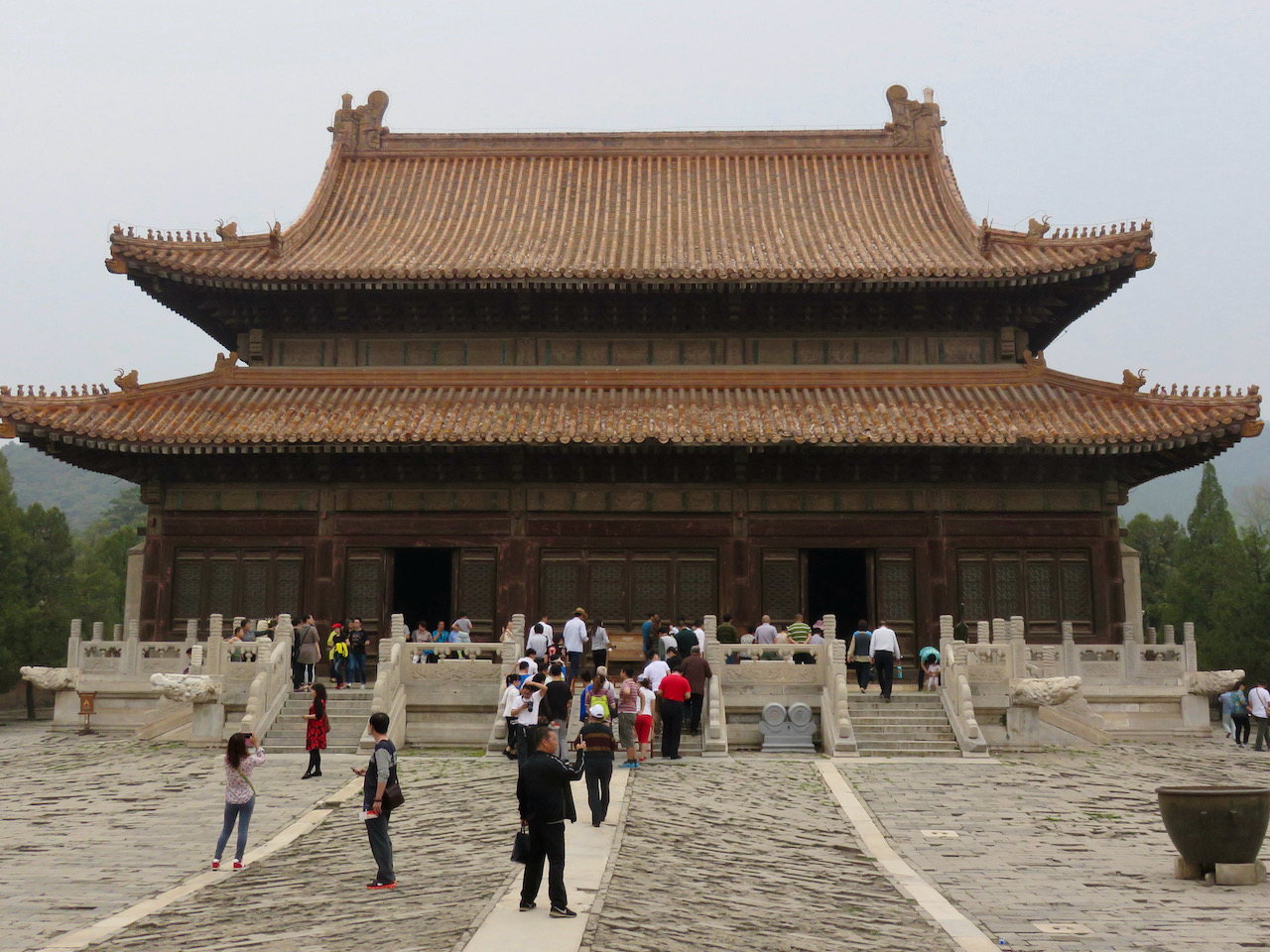
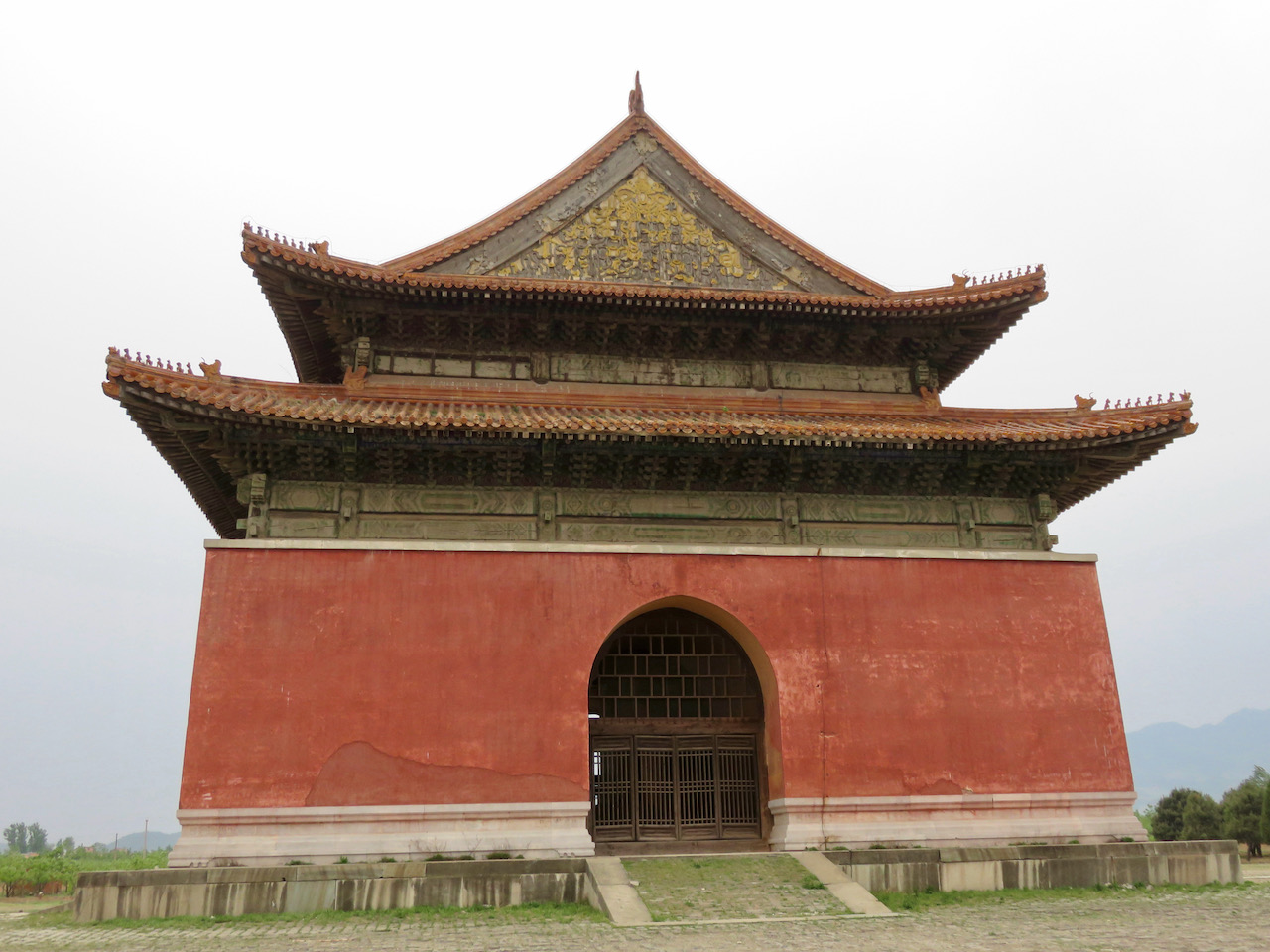
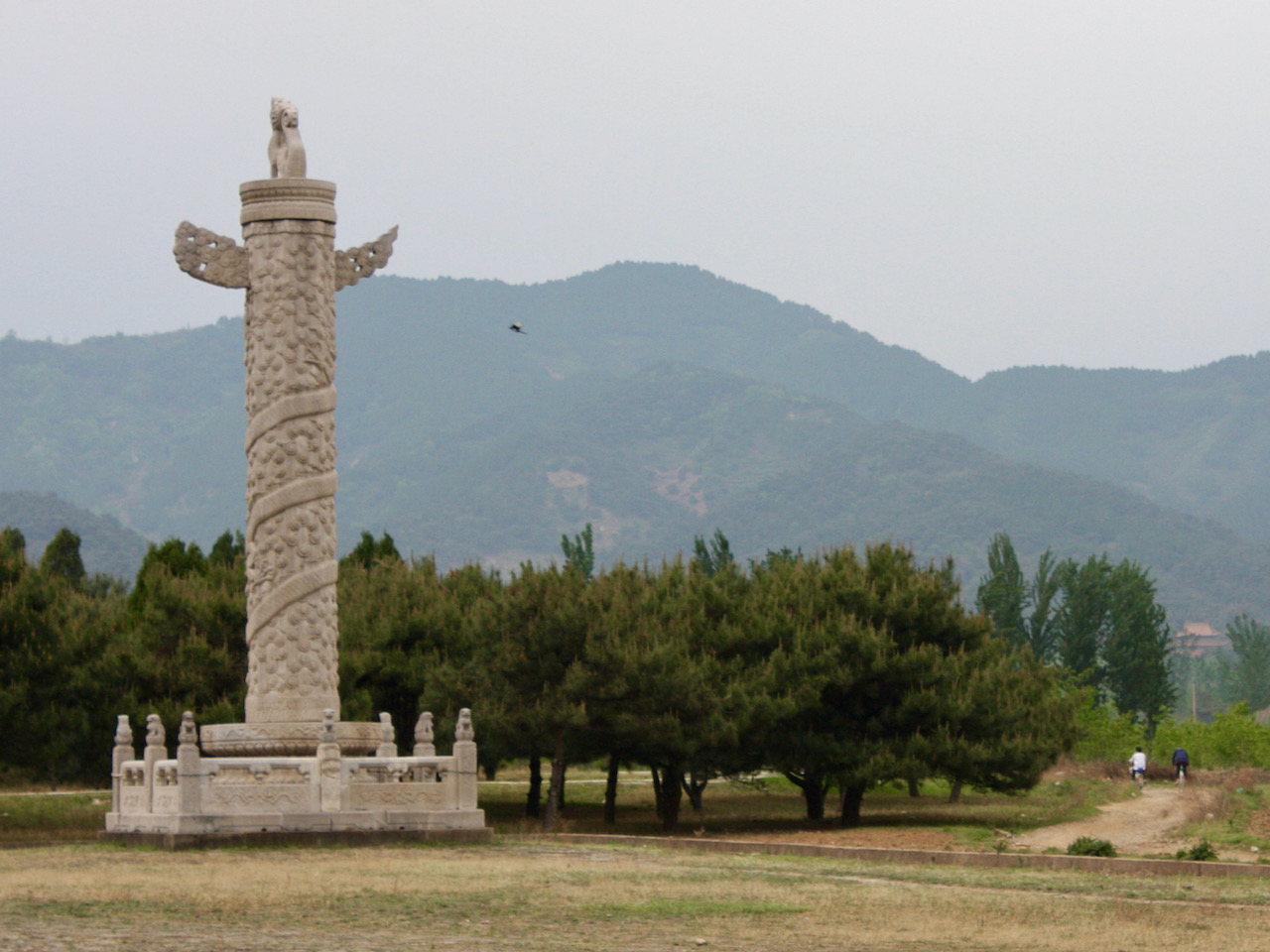
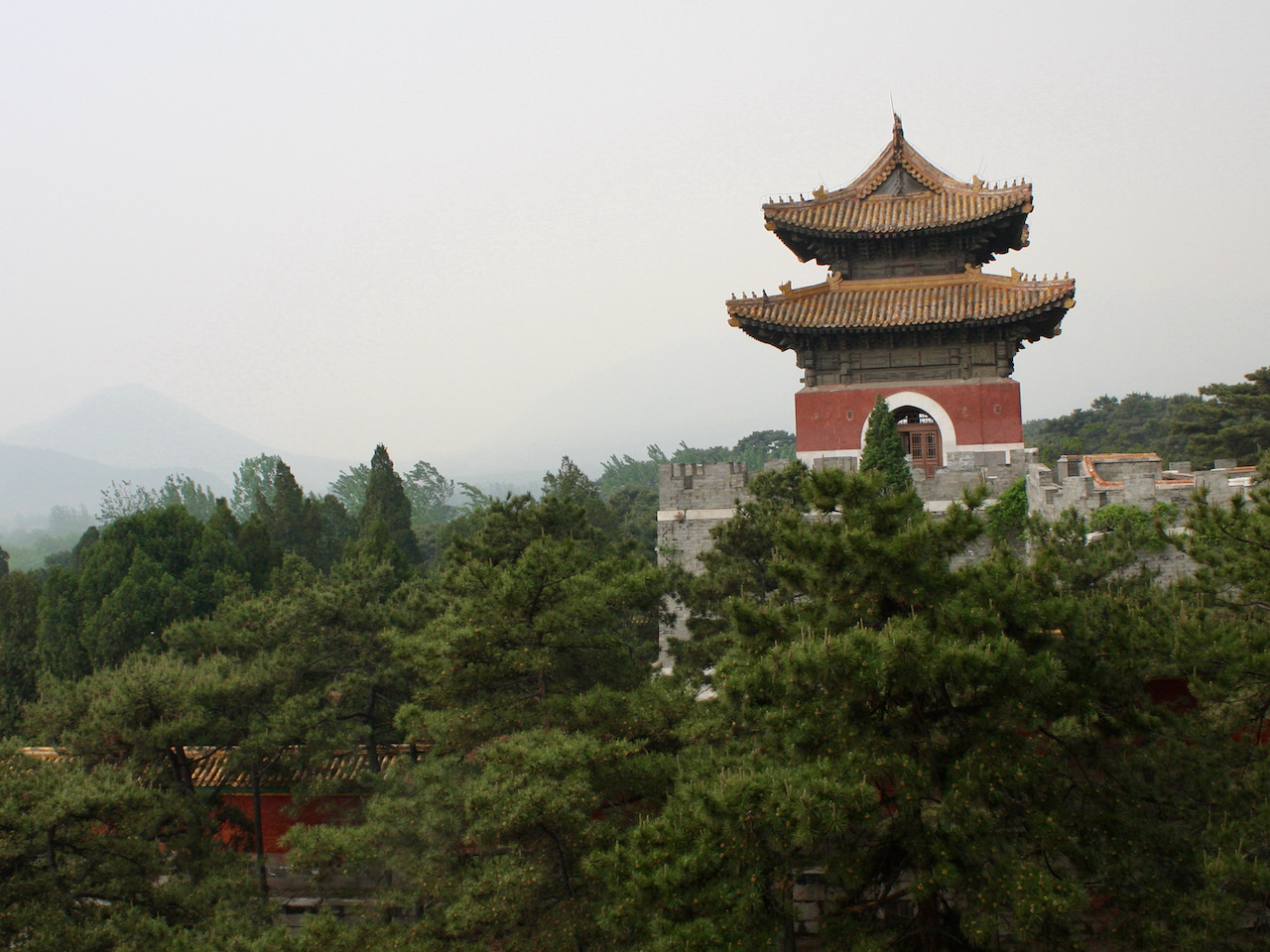
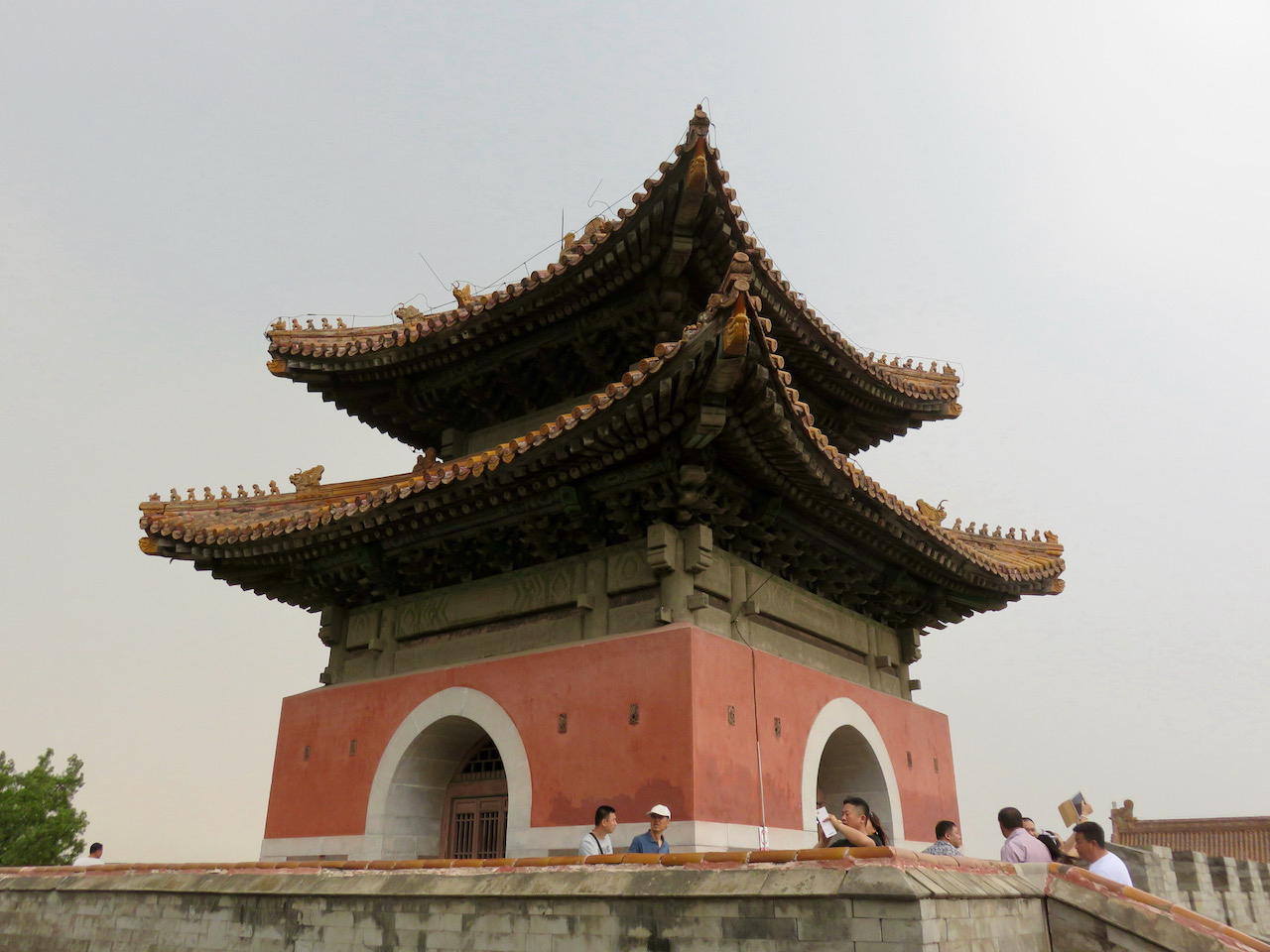
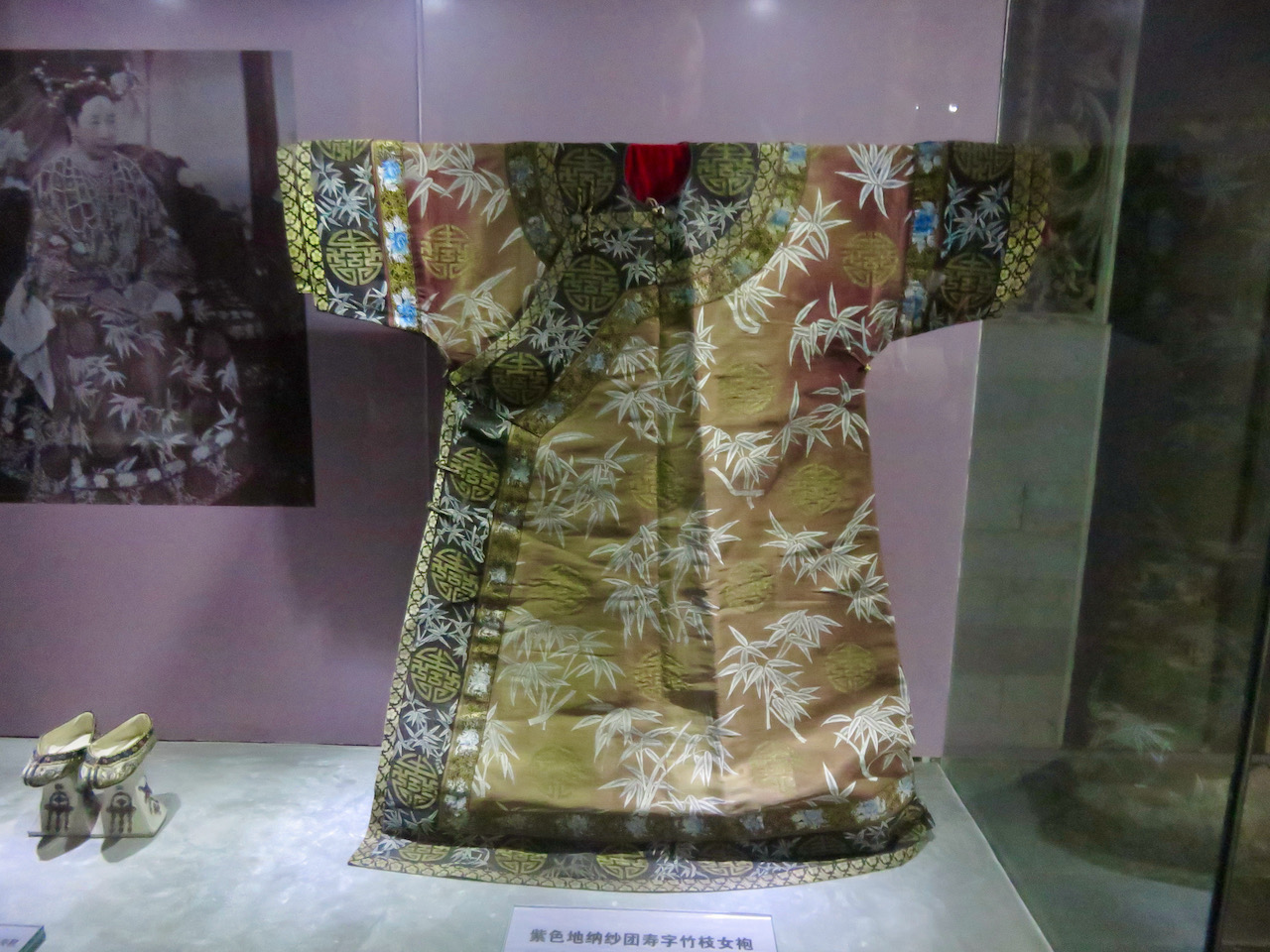
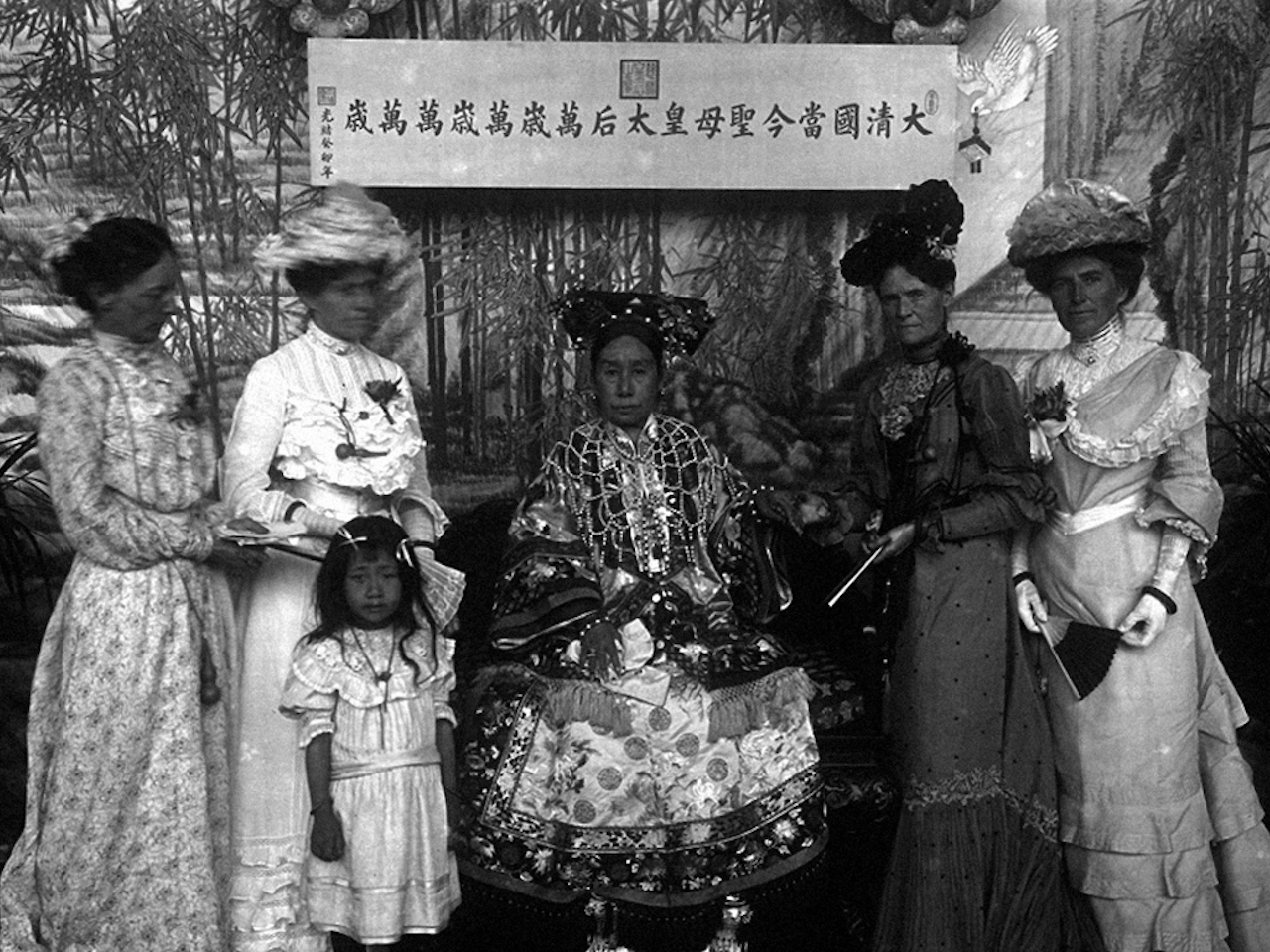
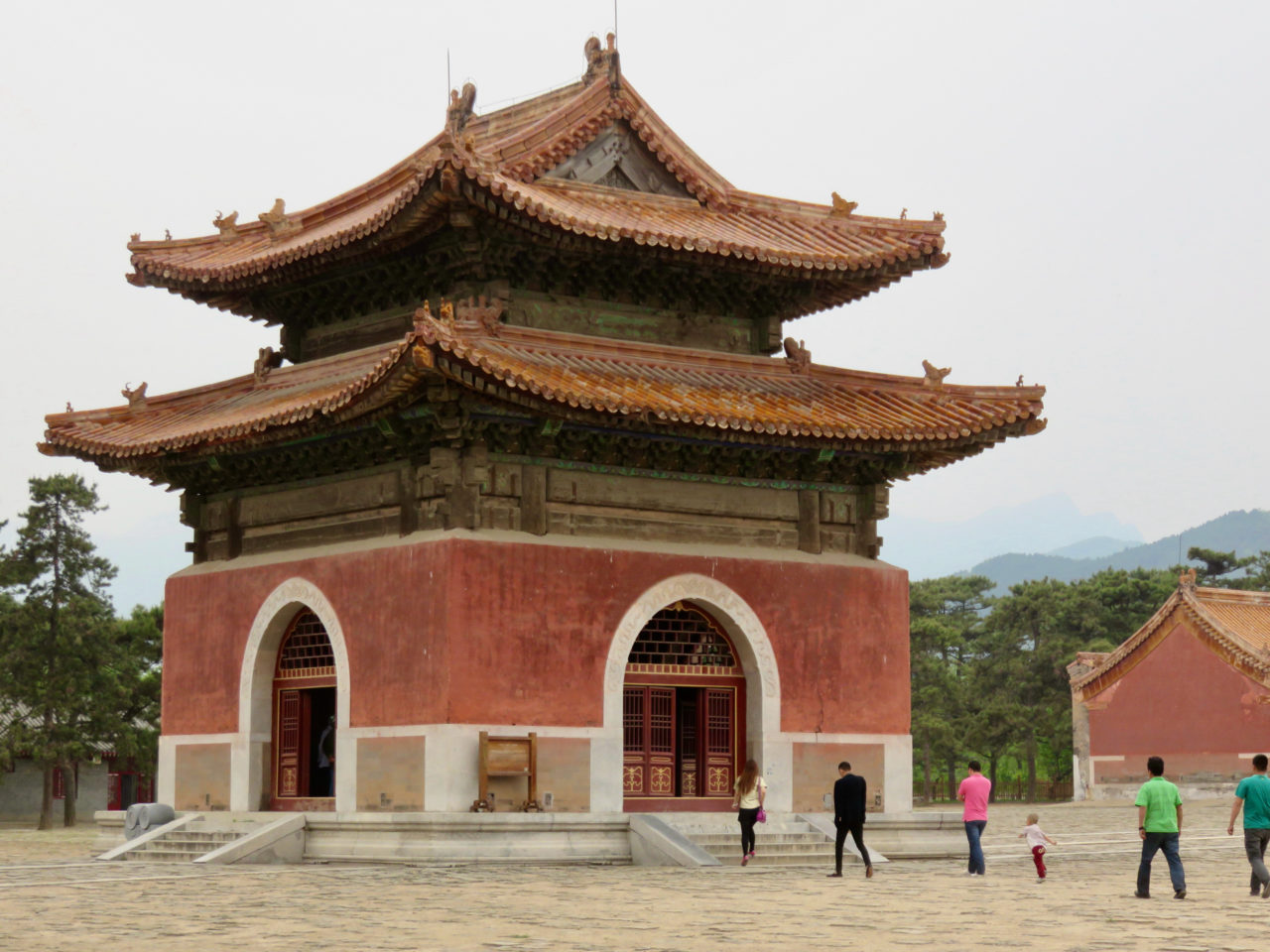

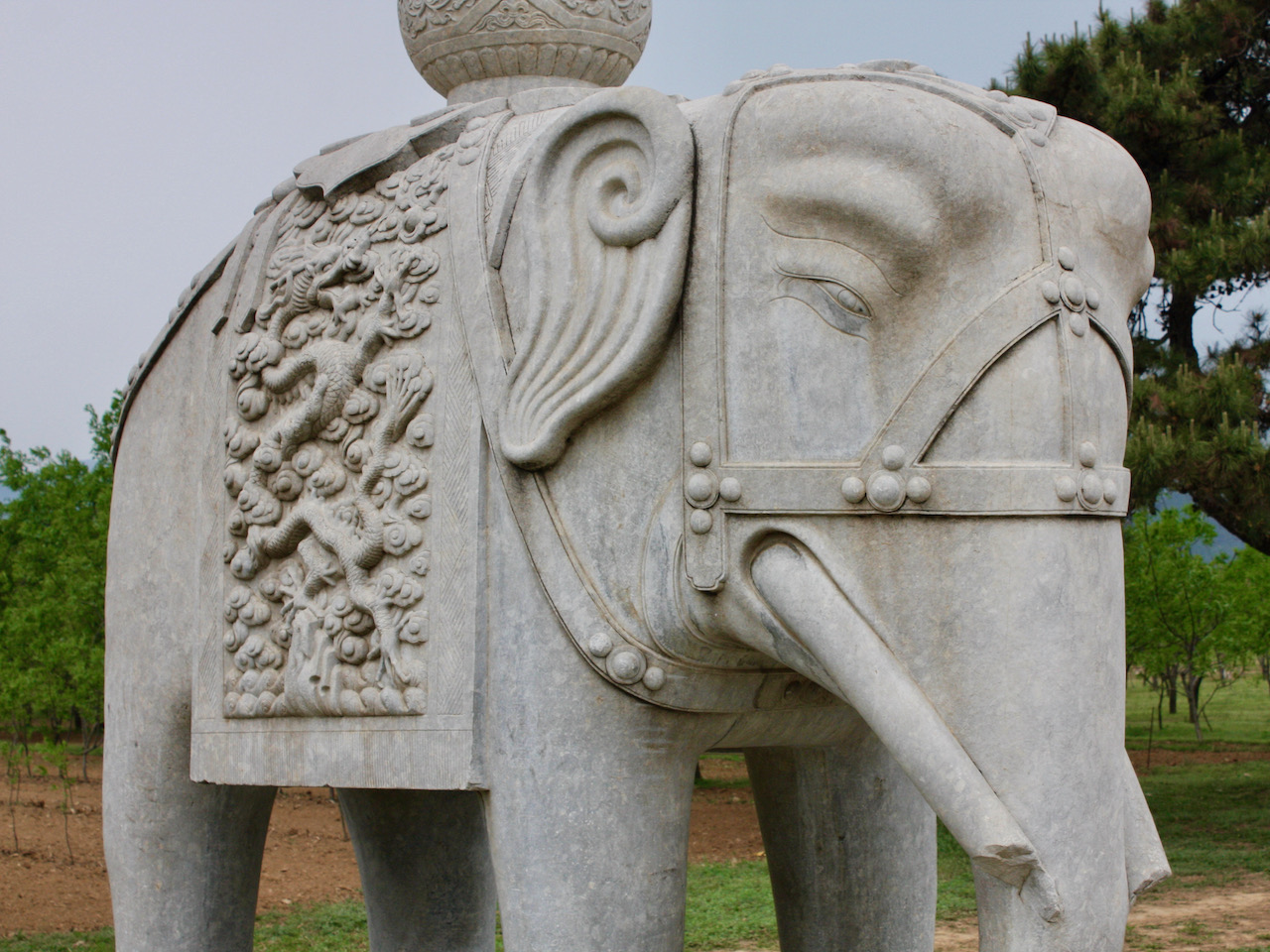
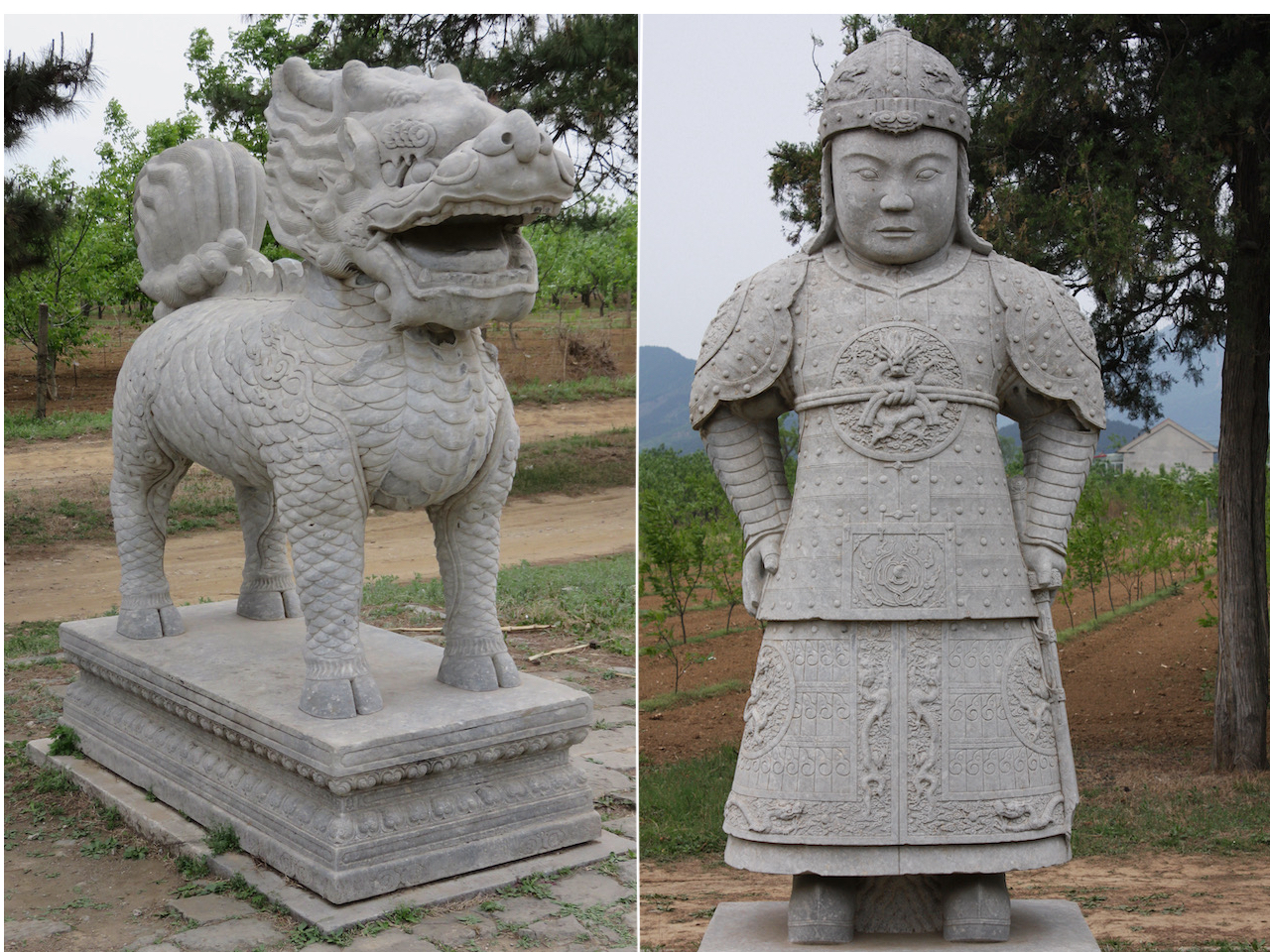
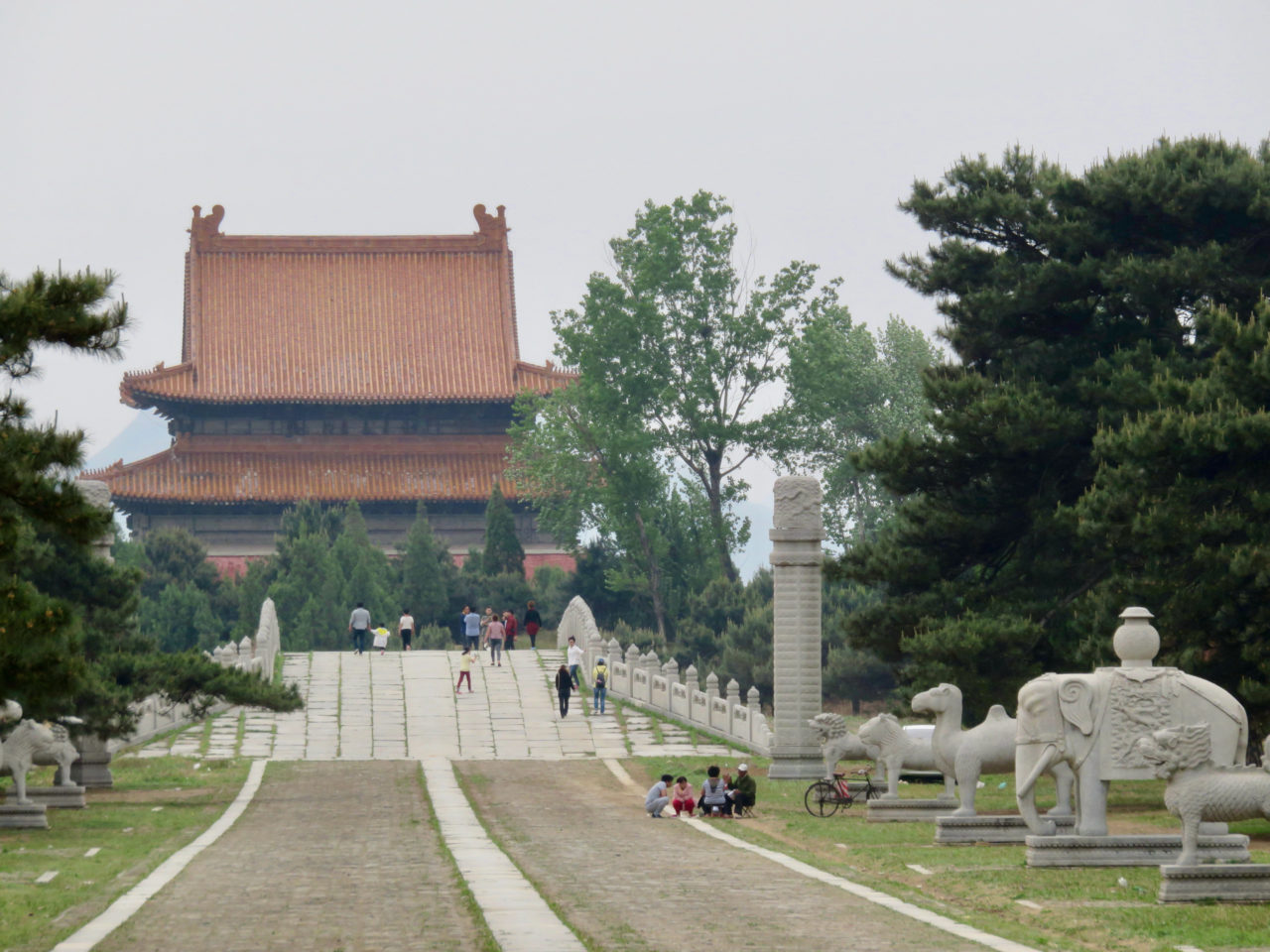
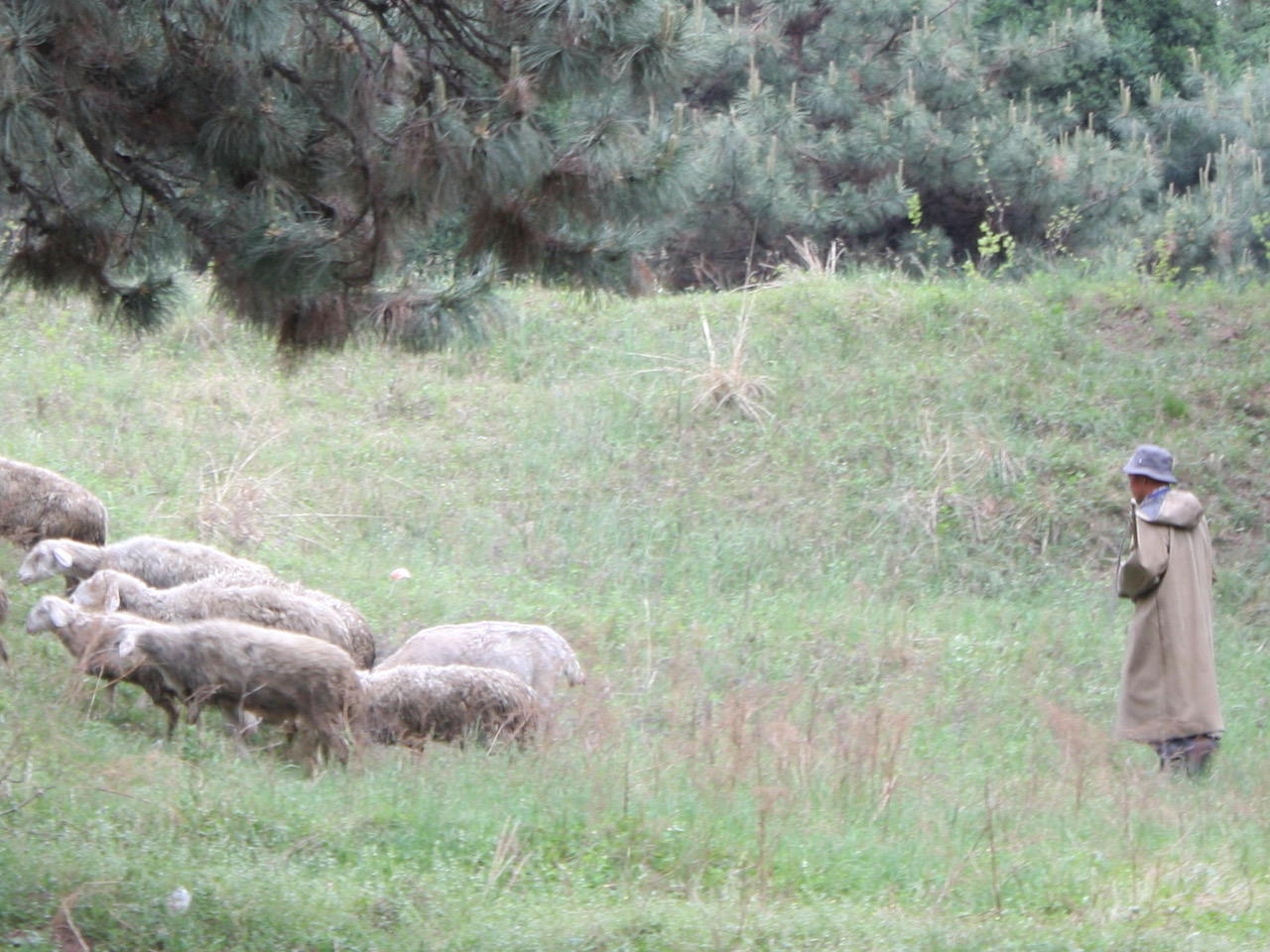
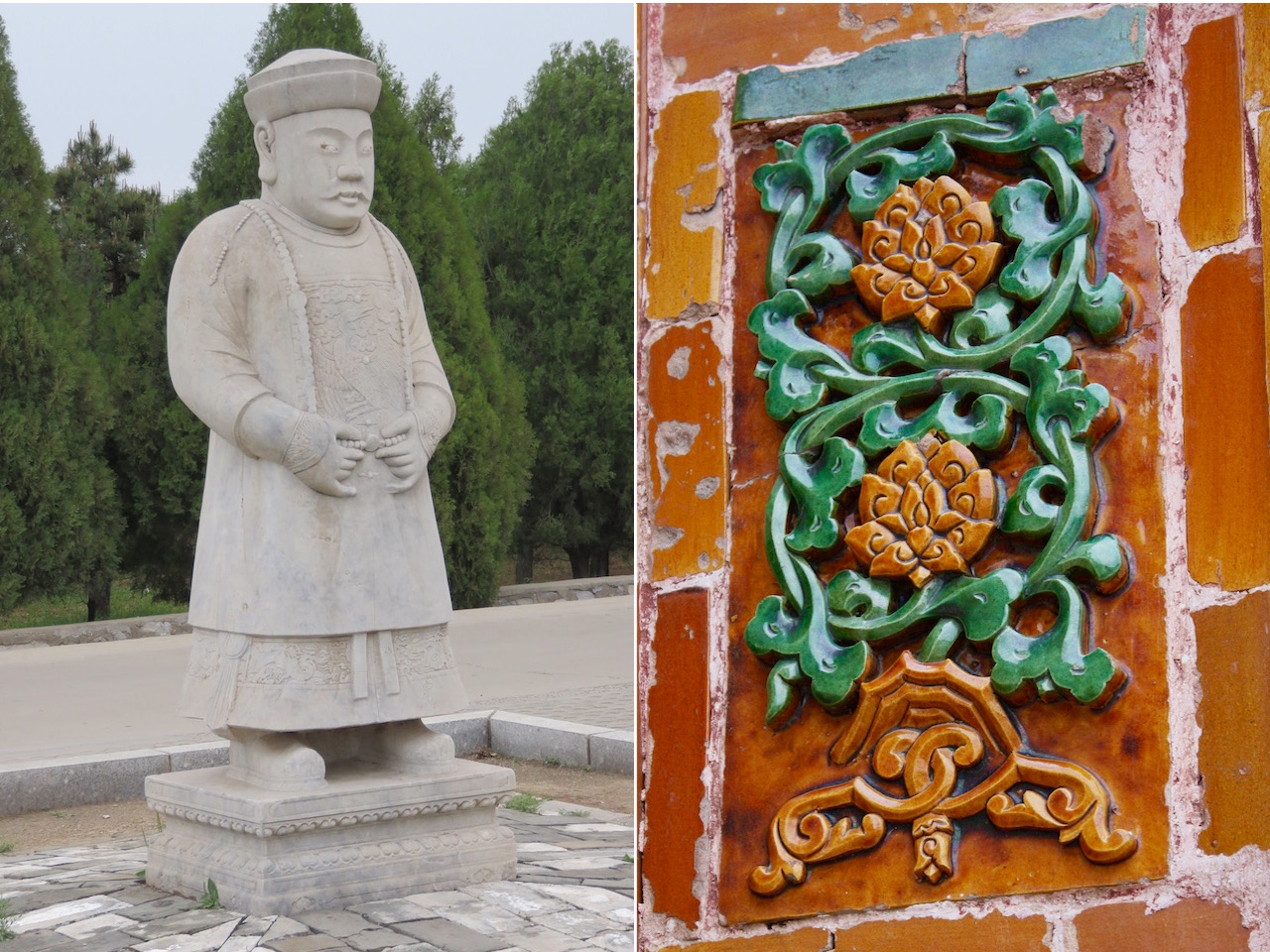
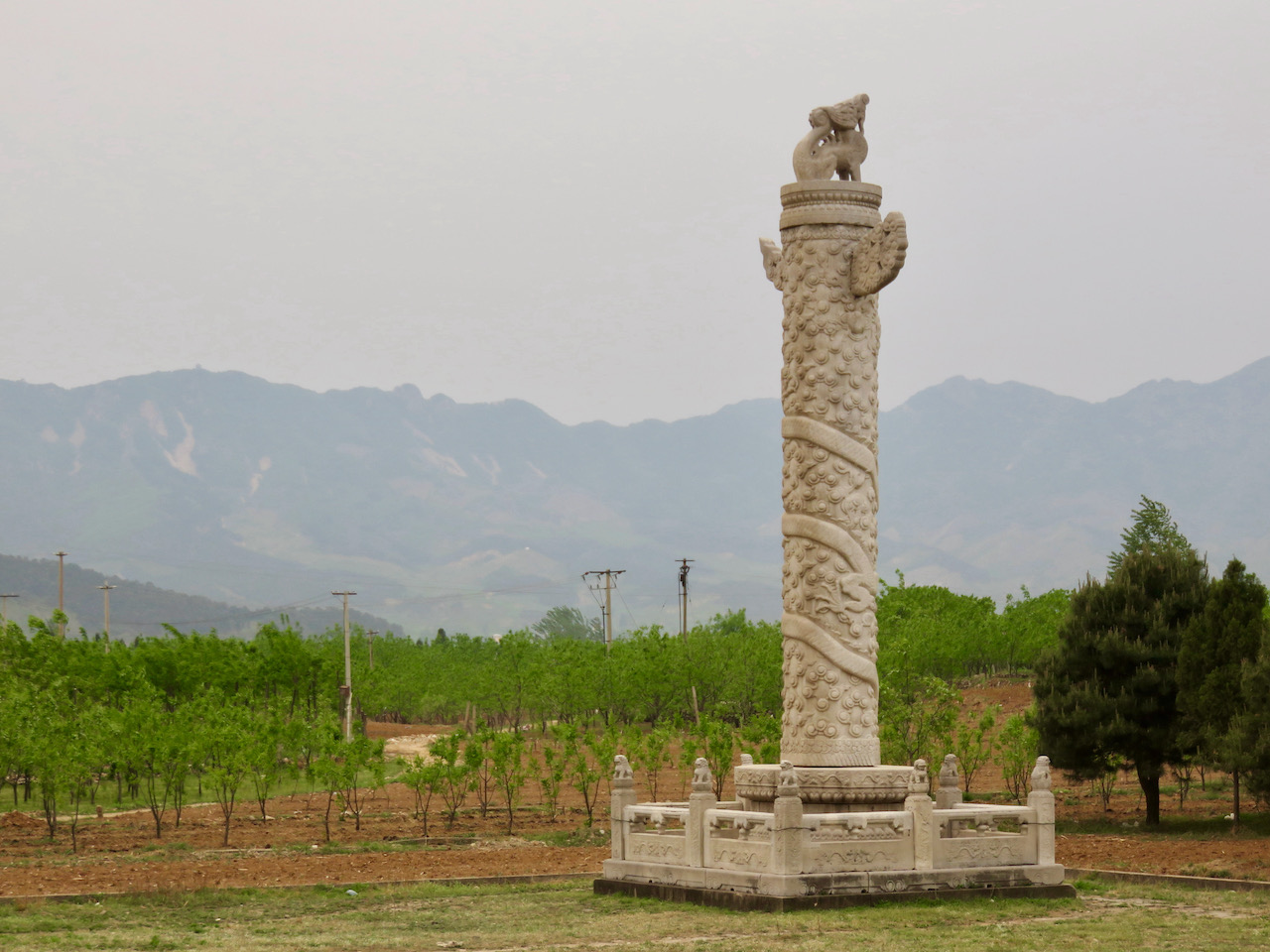
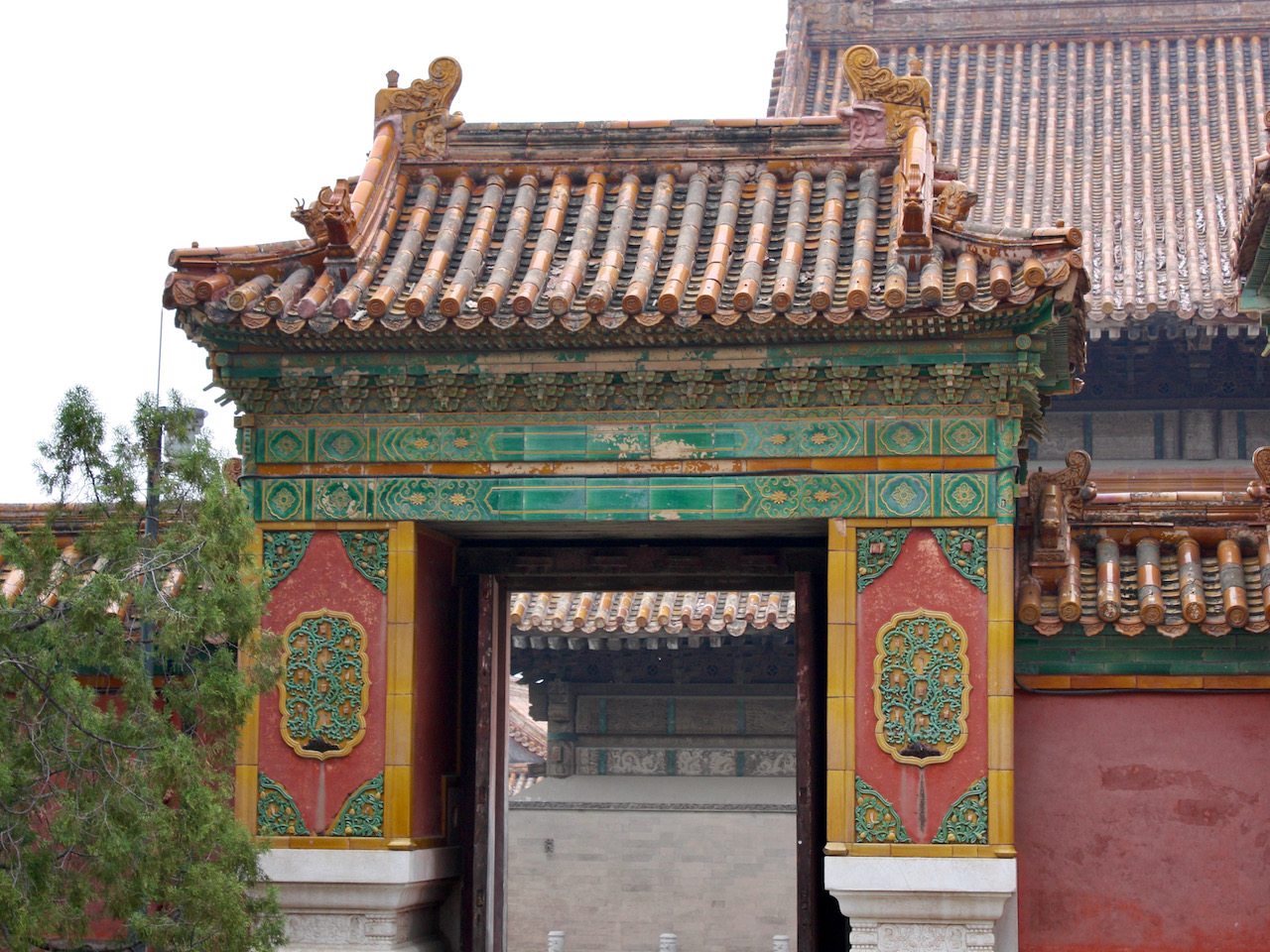
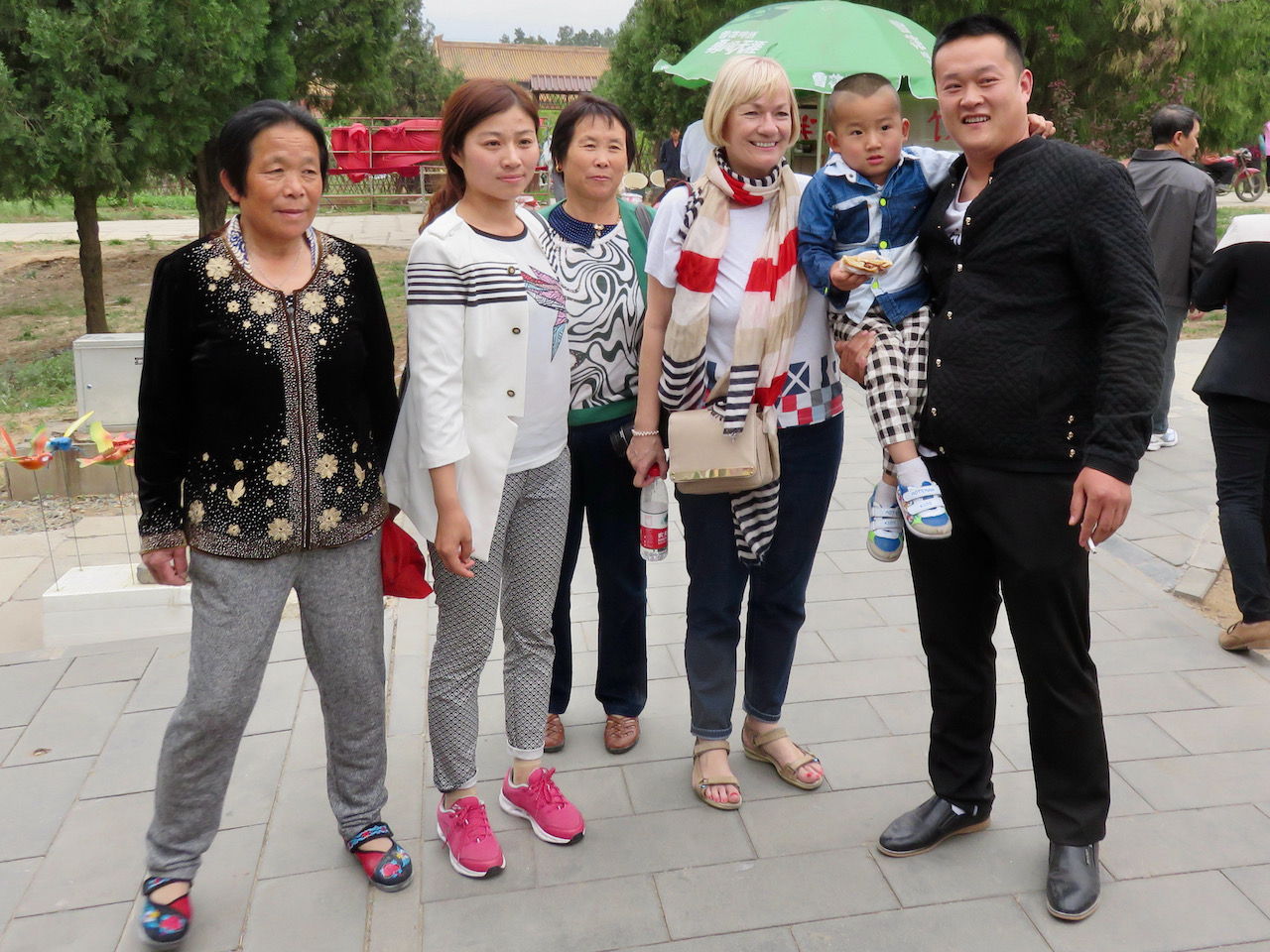
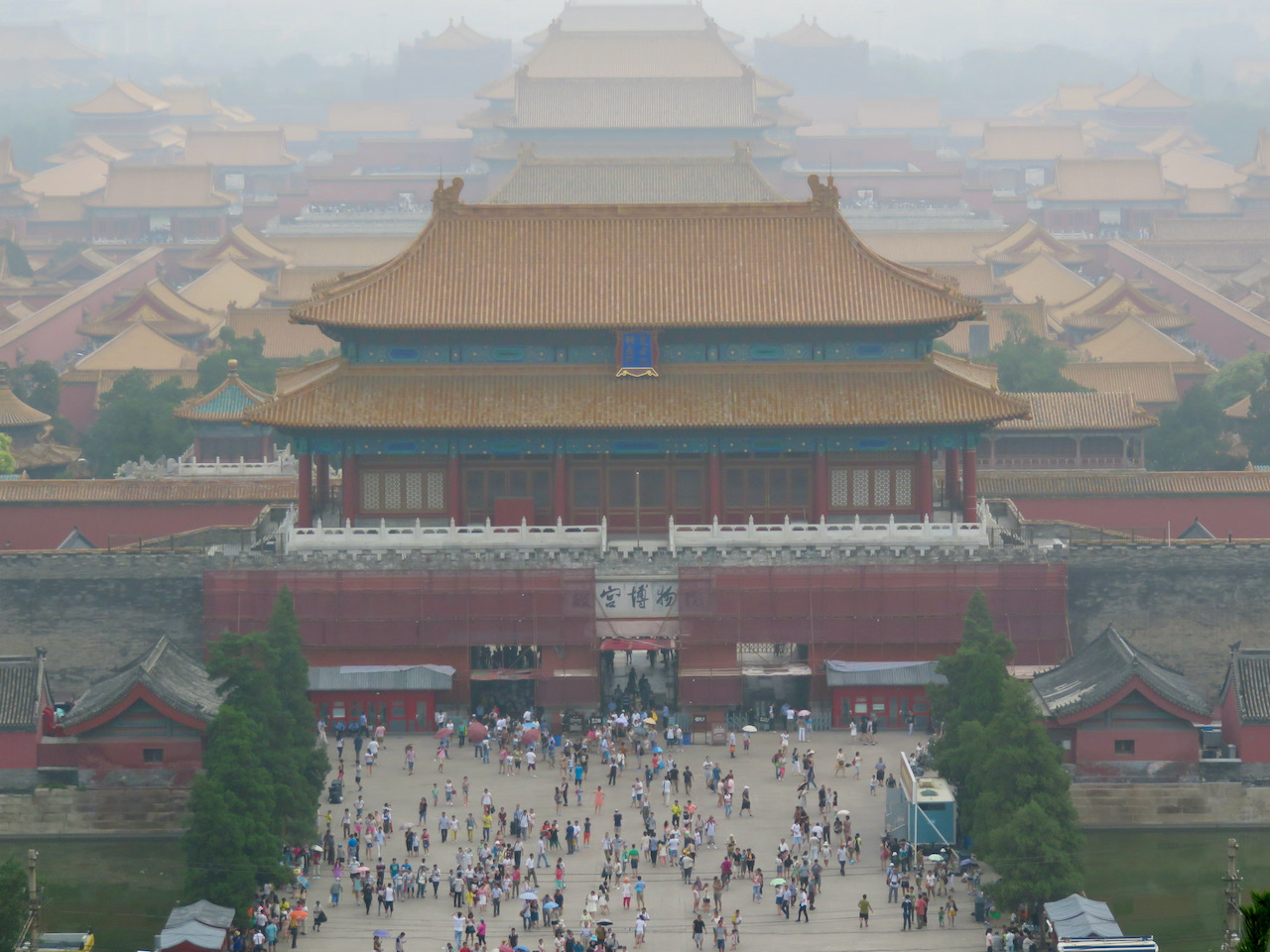
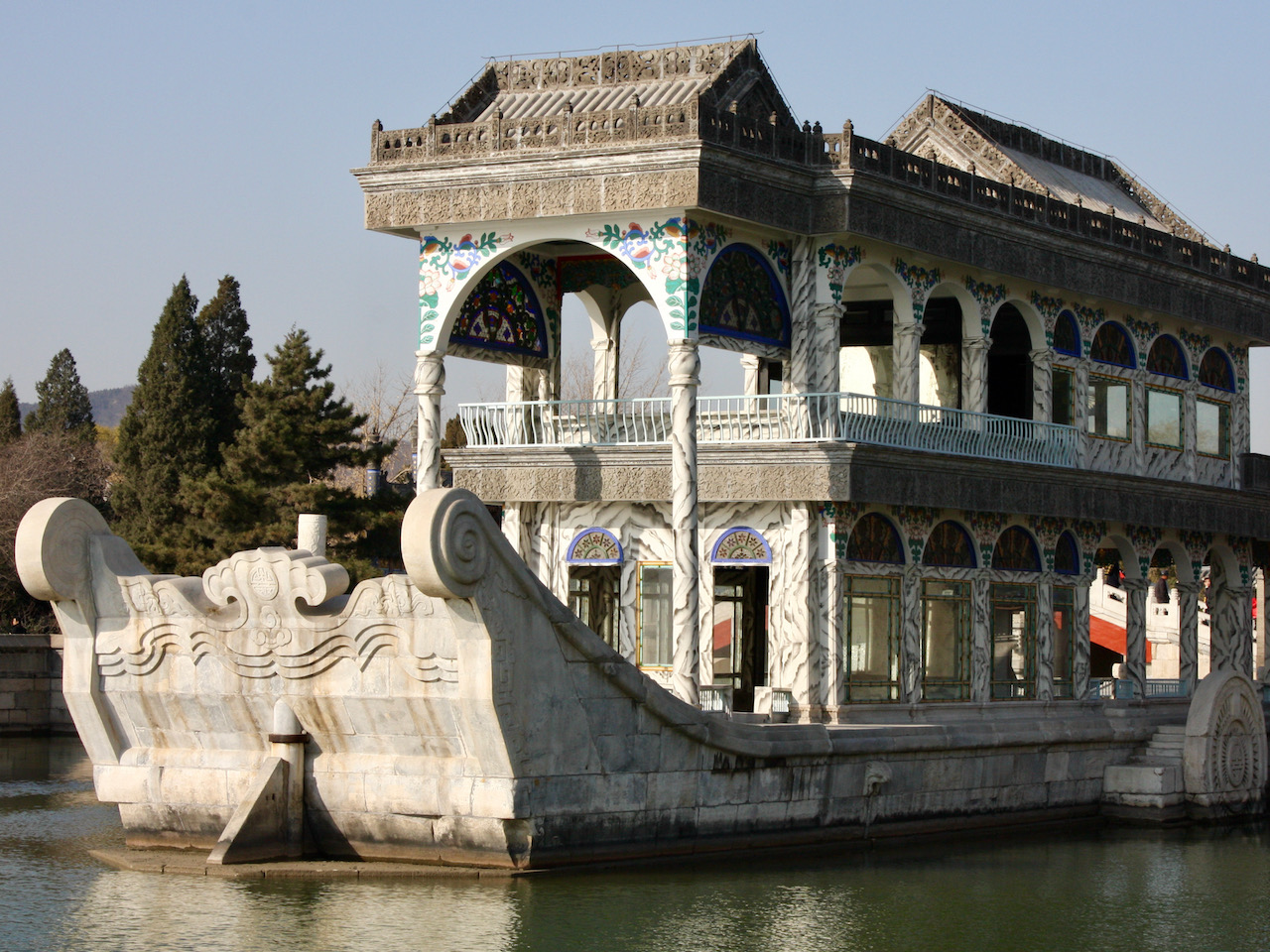
NEED TO KNOW: Eastern Qing Tombs
GETTING THERE: The site is 125 kilometres northeast of Beijing at Zunhua, Hebei province. Several companies offer tours, but avoid ones that combine visits to the Great Wall and the tombs as you won’t have time to do either justice. We booked a car and driver so we could proceed at our own pace. The journey from Beijing should take a bit over two hours, though if you go on the highway that passes Beijing Capital Airport there might be hold-ups. If your budget is tight you can take a coach to Zunhua from Beijing’s Sihui Long-Distance Bus Station then go to the tombs by taxi.
OPENING HOURS: April to October 8 am– 5 pm daily, admission 108 yuan; November to March 8.50 am–4 pm, admission 80 yuan. Free admission for children under 1.2 metres.
February 2021
MORE INFO
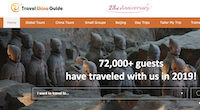 THE TRAVEL CHINA GUIDE site is a good source of English-language information about tourist attractions, including the Eastern Qing Tombs. READ MORE
THE TRAVEL CHINA GUIDE site is a good source of English-language information about tourist attractions, including the Eastern Qing Tombs. READ MORE
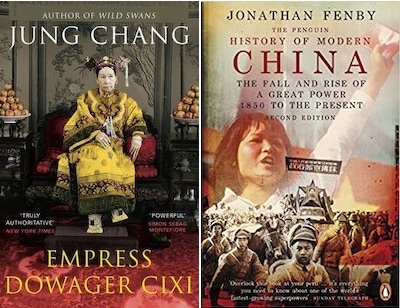 FOR MORE about Cixi, Jung Chang’s Empress Dowager Cixi: The Concubine Who Launched Modern China offers a revisionist account of her life. Pearl S. Buck’s fictionalised biography is called Imperial Woman. Chinese history can seem bewilderingly complicated. The Penguin History of Modern China, by Jonathan Fenby, is a commendably clear and readable account of the period from 1850
FOR MORE about Cixi, Jung Chang’s Empress Dowager Cixi: The Concubine Who Launched Modern China offers a revisionist account of her life. Pearl S. Buck’s fictionalised biography is called Imperial Woman. Chinese history can seem bewilderingly complicated. The Penguin History of Modern China, by Jonathan Fenby, is a commendably clear and readable account of the period from 1850
RELATED
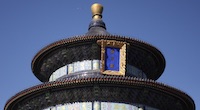 TEMPLE OF HEAVEN: For centuries, Chinese emperors prayed here for good harvests. And if the crops failed, the blame fell on them. READ MORE
TEMPLE OF HEAVEN: For centuries, Chinese emperors prayed here for good harvests. And if the crops failed, the blame fell on them. READ MORE
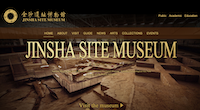 JINSHA SITE MUSEUM: In 2001, builders in China discovered a previously unknown ancient site, and subsequent excavations uncovered a vast treasure trove. READ MORE
JINSHA SITE MUSEUM: In 2001, builders in China discovered a previously unknown ancient site, and subsequent excavations uncovered a vast treasure trove. READ MORE
 CAVES FULL OF TREASURE: For 56 years, Fan Jinshi tended a treasure trove of ancient Buddhist masterpieces at the Mogao Caves in China. Now she’s been rewarded with “Asia’s Nobel Prize”, worth $2.5 million… READ MORE
CAVES FULL OF TREASURE: For 56 years, Fan Jinshi tended a treasure trove of ancient Buddhist masterpieces at the Mogao Caves in China. Now she’s been rewarded with “Asia’s Nobel Prize”, worth $2.5 million… READ MORE
 MAO MAUSOLEUM: Thousands throng to a memorial hall in Beijing’s Tiananmen Square to view the embalmed body of the revolutionary leader. READ MORE
MAO MAUSOLEUM: Thousands throng to a memorial hall in Beijing’s Tiananmen Square to view the embalmed body of the revolutionary leader. READ MORE
 MUSEUM QUALITY FOOD: The Chinese province of Sichuan takes its distinctive style of cooking very seriously — so much so that it has set up a museum devoted to the subject… READ MORE
MUSEUM QUALITY FOOD: The Chinese province of Sichuan takes its distinctive style of cooking very seriously — so much so that it has set up a museum devoted to the subject… READ MORE
RECOMMENDED
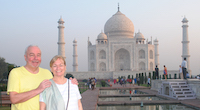 WELCOME TO OUR WORLD! Afaranwide’s home page – this is where you can find out about our latest posts and other highlights. READ MORE
WELCOME TO OUR WORLD! Afaranwide’s home page – this is where you can find out about our latest posts and other highlights. READ MORE
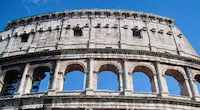 TOP 10 VIRTUAL ATTRACTIONS: Many of the world’s most popular tourists sites are closed because of the coronavirus crisis, but you can still visit them virtually while you’re self-isolating. READ MORE
TOP 10 VIRTUAL ATTRACTIONS: Many of the world’s most popular tourists sites are closed because of the coronavirus crisis, but you can still visit them virtually while you’re self-isolating. READ MORE
 SHIMLA, QUEEN OF THE HILLS: Government officials once retreated to Shimla in the foothills of the Himalayas to escape India’s blazing hot summers. Now tourists make the same journey. READ MORE
SHIMLA, QUEEN OF THE HILLS: Government officials once retreated to Shimla in the foothills of the Himalayas to escape India’s blazing hot summers. Now tourists make the same journey. READ MORE
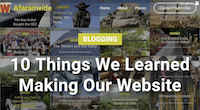 TEN THINGS WE LEARNED: Our up-to-the-minute guide to creating a website, one step at a time. The costs, the mistakes – it’s what we wish we’d known when we started blogging. READ MORE
TEN THINGS WE LEARNED: Our up-to-the-minute guide to creating a website, one step at a time. The costs, the mistakes – it’s what we wish we’d known when we started blogging. READ MORE
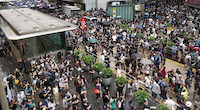 TROUBLED TIMES FOR EXPATS: Moving abroad can seem an idyllic prospect, but what happens when sudden upheavals or the inescapable realities of life intrude? READ MORE
TROUBLED TIMES FOR EXPATS: Moving abroad can seem an idyllic prospect, but what happens when sudden upheavals or the inescapable realities of life intrude? READ MORE
Disclosure: Afaranwide is an affiliate of leading travel operators such as Booking.com, Japan Rail Pass and Global Work & Travel, and the language-learning tool Toucan. If you purchase through our site we receive, at no additional cost to you, a small commission. We only work with companies we have used and recommend.
LET'S KEEP IN TOUCH!
Absolute Ruler
Who Fell Victim
to Tomb Raiders

COLIN SIMPSON
Eastern Qing Tombs, Zunhua, Hebei province. Chinese Name: 清東陵
IT’S ONE of the first of many memorable scenes in Bernardo Bertolucci’s sumptuous epic The Last Emperor. An elderly woman with a powdered, lined face, unfeasibly long nails and a Pekingese is seen on her deathbed.
With her last few breaths she tells the toddler Puyi that he is to become the new ruler of China, thus beginning the remarkable story told in the multi-Oscar winning movie.
The dying woman is the Empress Dowager Cixi, an extraordinary figure in the history of China. The one-time imperial concubine rose to become the country’s de facto ruler for 47 years from 1861 until her death. She was the last powerful figure in a tradition of dynastic rule that had lasted nearly 4,000 years, and when she died in 1908 aged 72 the death rites lasted a year.
She’s buried a couple of hours’ drive from Beijing, at the Eastern Qing Tombs. Most Western visitors to China’s capital visit famous attractions such as the Great Wall, Tiananmen Square and the Forbidden City, the Temple of Heaven and the Summer Palace. Though less well known, the Eastern Qing Tombs are equally spectacular.

Anyone who’s visited the Forbidden City – or seen The Last Emperor – will know that it’s enormous. But the tombs site, at 80 square kilometres, is a remarkable 111 times as large, or equal to 11,204 football pitches. Everything in China seems big, but this is ridiculous.
The complex includes the graves of five Qing Dynasty emperors, and also buried there are empresses, concubines, princes and princesses. The emperors started work on their tombs soon after taking the throne, and the grand, ornate buildings were an expression of their power.
The site is included on the Unesco’s World Heritage List along with other tombs from the Ming and Qing dynasties. Unesco describes them as “masterpieces of human creative genius”. The whole place is laid out according to the rules of feng shui, and the surrounding mountains provide an imposing backdrop.
Burials of Emperors
There is a second major Qing tombs complex to the west of Beijing, though it’s smaller and less complete than the eastern one. In most cases, burials of emperors alternated between the two sites.
We were taken aback by the size of the eastern compound. There are 15 mausoleums and 586 individual buildings. By the time we’d explored two or three of the tombs and walked around a small part of the site we found ourselves running out of both time and leg power.
Our driver had dropped us off close to the mausoleum of the eighth Qing emperor, Xianfeng, so we started there. The grander tombs consist of several buildings, many of them strikingly beautiful.

The most imposing of all is that of Shunzhi, the first Qing emperor to rule the whole of China. It’s worth planning your trip to make sure you leave time to see this one. Shunzhi’s compound stands at the end of the Spirit Path, a wide roadway lined on either side with statues of warriors and animals.
Sheep, watched over by attentive shepherds, help to keep the grass down across the site. We took a picnic, and sitting down to eat gave us a welcome break from walking. Chinese visitors, apparently unfamiliar with the alfresco dining concept, looked on intrigued.
Often in China, people approach Westerners and ask to have their picture taken with them. Sue’s blonde look attracted particular interest, perhaps not surprisingly in a country where 1.3 billion people have been born with black hair. At the tombs, a whole family wanted a picture.
Air Felt Damp
Afterwards we made our way to Cixi’s grave, one of a few where the burial chamber is open to the public. You enter through a tunnel, at the end of which is a large coffin encased in glass. The air felt damp, and the stone walls were disfigured by patches of green mould. There was something gloomy about the place that meant we were glad to leave.
The grave was the scene of an event in 1928 that scandalised China. Troops loyal to a warlord dynamited their way in during a large-scale looting of the tomb complex. They removed the many valuables that had been buried with Cixi, stripped her mummified body and took jewels and pearls from her clothes.
Returning to that early scene in The Last Emperor, when Cixi dies a large pearl is placed in her mouth. This actually happened, as required by Chinese tradition. During the robbery, the looters were said to have forced open her jaws and removed the pearl.


Afterwards a rumour circulated that the pearl was given to Nationalist leader Chiang Kai-shek’s wife, who wore it on her shoe. Puyi was so offended by this that he threw in his lot with the Japanese, eventually becoming puppet emperor of a state set up by Tokyo.
Perhaps the fact that I had read about the tomb raid accounted for the grim and gloomy feelings I had as I stood next to the coffin.
Items that belonged to Cixi are on show, including seals, calligraphy and an extraordinary purple and gold bamboo-patterned robe displayed next to a photo of her wearing it.
Blood-Thirsty Despot?
As for the legacy of Cixi (pronounced tsoo-shee), history’s verdict is mixed. Many regard her as a blood-thirsty despot, and the fact that she, for example, had an imperial concubine thrown to her death in a well tends to bear this out.
Others are kinder to her memory, seeing her as an enlightened reformer and, less plausibly, an early feminist. The Nobel Prize-winning novelist Pearl S. Buck, who wrote a fictionalised biography of Cixi, said “the peasants and the small-town people revered her”.
Wild Swans author Jung Chang risks being seen as an apologist in her otherwise excellent biography when she writes: “Compared to that of her predecessors, or successors, Cixi’s rule was benign. In some four decades of absolute power, her political killings – whether just or unjust… were no more than a few dozen.”


Sites in Beijing associated with Cixi include the Forbidden City and the New Summer Palace. At the Forbidden City, she “ruled from behind the curtain” when she held court, as it was deemed improper for a woman to be seen by men.
Cixi diverted money meant for the navy to expand and renovate the Summer Palace. Ironically, a waterside pavilion known as the Marble Boat was rebuilt as part of the project.
The elaborate clothes in which she was buried have been restored by the China National Silk Museum at Hangzhou, Zhejiang Province.
Verdict: Visiting the tombs makes for a fascinating day out, but take sturdy walking shoes.
Main photo: Cixi’s mausoleum.
EXPLAINER: A Brief History of China
CHINA has a long, complex and often brutal history. But when I was growing up in the UK little was taught about it in schools. All that anyone knew of the Ming dynasty (1368-1644), for example, usually involved vases. So here’s a quick guide to 4,000 years of history:
For nearly four millennia, from 2070 BC, China was ruled by a succession of dynasties. In 221 BC it became a unified empire under the first emperor Qin Shi Huang (the one who was buried with the Terracotta Army in the city of Xi’an). He founded the Qin dynasty and began the construction of the Great Wall, work that continued for the next 1,800 years.
British schoolchildren are taught about the Roman empire. At its peak in 117 AD it covered 5 million square kilometres; the Chinese empire at that time extended across 6.5 million square kilometres, and eventually grew to 14.7 million square kilometres.

From 1839, China suffered what is known as the century of humiliation as it faced encroachment and subjugation by the Western powers, plus Japan and Russia. The final dynasty, the Qing (pronounced Ching, 1644-1912), ended with the abdication of the last emperor, Puyi.
China became a republic and was in time plunged into a civil war between Mao Zedong’s Communists and Chiang Kai-shek’s Nationalists. In 1949, the Communists won and created the People’s Republic of China. The Nationalists retreated to the island of Taiwan where they established the Republic of China – the similarity of the names causes confusion to this day.
On the mainland, the Great Leap Forward, a disastrous series of agricultural reforms, and the Cultural Revolution resulted in millions of deaths. Mao died in 1976, and Deng Xiaoping became China’s paramount leader. He led reforms that began in 1978 and led to the creation of the economic powerhouse we know today.



















NEED TO KNOW: Eastern Qing Tombs
GETTING THERE: The site is 125 kilometres northeast of Beijing at Zunhua, Hebei province. Several companies offer tours, but avoid ones that combine visits to the Great Wall and the tombs as you won’t have time to do either justice. We booked a car and driver so we could proceed at our own pace. The journey from Beijing should take a bit over two hours, though if you go on the highway that passes Beijing Capital Airport there might be hold-ups. If your budget is tight you can take a coach to Zunhua from Beijing’s Sihui Long-Distance Bus Station then go to the tombs by taxi.
OPENING HOURS: April to October 8 am– 5 pm daily, admission 108 yuan; November to March 8.50 am–4 pm, admission 80 yuan. Free admission for children under 1.2 metres.
February 2021
MORE INFO
 THE TRAVEL CHINA GUIDE site is a good source of English-language information about tourist attractions, including the Eastern Qing Tombs. READ MORE
THE TRAVEL CHINA GUIDE site is a good source of English-language information about tourist attractions, including the Eastern Qing Tombs. READ MORE
 FOR MORE about Cixi, Jung Chang’s Empress Dowager Cixi: The Concubine Who Launched Modern China offers a revisionist account of her life. Pearl S. Buck’s fictionalised biography is called Imperial Woman. Chinese history can seem bewilderingly complicated. The Penguin History of Modern China, by Jonathan Fenby, is a commendably clear and readable account of the period from 1850
FOR MORE about Cixi, Jung Chang’s Empress Dowager Cixi: The Concubine Who Launched Modern China offers a revisionist account of her life. Pearl S. Buck’s fictionalised biography is called Imperial Woman. Chinese history can seem bewilderingly complicated. The Penguin History of Modern China, by Jonathan Fenby, is a commendably clear and readable account of the period from 1850
RELATED
 TEMPLE OF HEAVEN: For centuries, Chinese emperors prayed here for good harvests. And if the crops failed, the blame fell on them. READ MORE
TEMPLE OF HEAVEN: For centuries, Chinese emperors prayed here for good harvests. And if the crops failed, the blame fell on them. READ MORE
 JINSHA SITE MUSEUM: In 2001, builders in China discovered a previously unknown ancient site, and subsequent excavations uncovered a vast treasure trove. READ MORE
JINSHA SITE MUSEUM: In 2001, builders in China discovered a previously unknown ancient site, and subsequent excavations uncovered a vast treasure trove. READ MORE
 CAVES FULL OF TREASURE: For 56 years, Fan Jinshi tended a treasure trove of ancient Buddhist masterpieces at the Mogao Caves in China. Now she’s been rewarded with “Asia’s Nobel Prize”, worth $2.5 million… READ MORE
CAVES FULL OF TREASURE: For 56 years, Fan Jinshi tended a treasure trove of ancient Buddhist masterpieces at the Mogao Caves in China. Now she’s been rewarded with “Asia’s Nobel Prize”, worth $2.5 million… READ MORE
 MAO MAUSOLEUM: Thousands throng to a memorial hall in Beijing’s Tiananmen Square to view the embalmed body of the revolutionary leader. READ MORE
MAO MAUSOLEUM: Thousands throng to a memorial hall in Beijing’s Tiananmen Square to view the embalmed body of the revolutionary leader. READ MORE
 MUSEUM QUALITY FOOD: The Chinese province of Sichuan takes its distinctive style of cooking very seriously — so much so that it has set up a museum devoted to the subject… READ MORE
MUSEUM QUALITY FOOD: The Chinese province of Sichuan takes its distinctive style of cooking very seriously — so much so that it has set up a museum devoted to the subject… READ MORE
RECOMMENDED
 WELCOME TO OUR WORLD! Afaranwide’s home page – this is where you can find out about our latest posts and other highlights. READ MORE
WELCOME TO OUR WORLD! Afaranwide’s home page – this is where you can find out about our latest posts and other highlights. READ MORE
 TOP 10 VIRTUAL ATTRACTIONS: Many of the world’s most popular tourists sites are closed because of the coronavirus crisis, but you can still visit them virtually while you’re self-isolating. READ MORE
TOP 10 VIRTUAL ATTRACTIONS: Many of the world’s most popular tourists sites are closed because of the coronavirus crisis, but you can still visit them virtually while you’re self-isolating. READ MORE
 SHIMLA, QUEEN OF THE HILLS: Government officials once retreated to Shimla in the foothills of the Himalayas to escape India’s blazing hot summers. Now tourists make the same journey. READ MORE
SHIMLA, QUEEN OF THE HILLS: Government officials once retreated to Shimla in the foothills of the Himalayas to escape India’s blazing hot summers. Now tourists make the same journey. READ MORE
 TEN THINGS WE LEARNED: Our up-to-the-minute guide to creating a website, one step at a time. The costs, the mistakes – it’s what we wish we’d known when we started blogging. READ MORE
TEN THINGS WE LEARNED: Our up-to-the-minute guide to creating a website, one step at a time. The costs, the mistakes – it’s what we wish we’d known when we started blogging. READ MORE
 TROUBLED TIMES FOR EXPATS: Moving abroad can seem an idyllic prospect, but what happens when sudden upheavals or the inescapable realities of life intrude? READ MORE
TROUBLED TIMES FOR EXPATS: Moving abroad can seem an idyllic prospect, but what happens when sudden upheavals or the inescapable realities of life intrude? READ MORE
Disclosure: Afaranwide is an affiliate of leading travel operators such as Booking.com, Japan Rail Pass and Global Work & Travel, and the language-learning tool Toucan. If you purchase through our site we receive, at no additional cost to you, a small commission. We only work with companies we have used and recommend.
LET'S KEEP IN TOUCH!
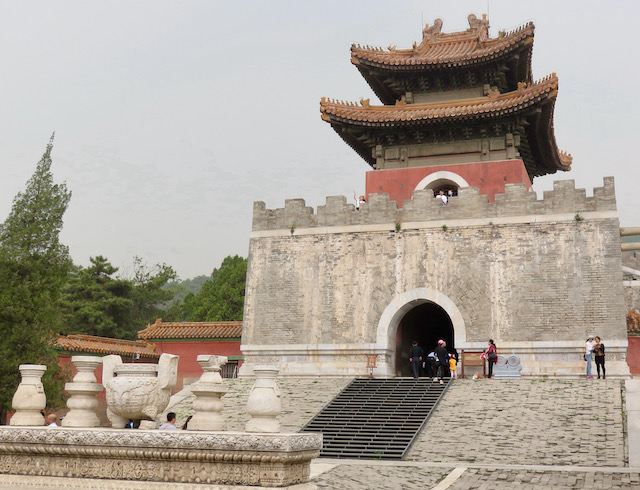
Absolute Ruler Who Fell Victim to Tomb Raiders

Emperor's Concubine Became Supreme Leader of 400 Million at the End of China's 4,000-Year Feudal Era

COLIN SIMPSON
Eastern Qing Tombs, Zunhua, Hebei province. Chinese Name: 清東陵
IT’S ONE of the first of many memorable scenes in Bernardo Bertolucci’s sumptuous epic The Last Emperor. An elderly woman with a powdered, lined face, unfeasibly long nails and a Pekingese is seen on her deathbed.
With her last few breaths she tells the toddler Puyi that he is to become the new ruler of China, thus beginning the remarkable story told in the multi-Oscar winning movie.
The dying woman is the Empress Dowager Cixi, an extraordinary figure in the history of China. The one-time imperial concubine rose to become the country’s de facto ruler for 47 years from 1861 until her death. She was the last powerful figure in a tradition of dynastic rule that had lasted nearly 4,000 years, and when she died in 1908 aged 72 the death rites lasted a year.
She’s buried a couple of hours’ drive from Beijing, at the Eastern Qing Tombs. Most Western visitors to China’s capital visit famous attractions such as the Great Wall, Tiananmen Square and the Forbidden City, the Temple of Heaven and the Summer Palace. Though less well known, the Eastern Qing Tombs are equally spectacular.

Anyone who’s visited the Forbidden City – or seen The Last Emperor – will know that it’s enormous. But the tombs site, at 80 square kilometres, is a remarkable 111 times as large, or equal to 11,204 football pitches. Everything in China seems big, but this is ridiculous.
The complex includes the graves of five Qing Dynasty emperors, and also buried there are empresses, concubines, princes and princesses. The emperors started work on their tombs soon after taking the throne, and the grand, ornate buildings were an expression of their power.
The site is included on the Unesco’s World Heritage List along with other tombs from the Ming and Qing dynasties. Unesco describes them as “masterpieces of human creative genius”. The whole place is laid out according to the rules of feng shui, and the surrounding mountains provide an imposing backdrop.
Burials of Emperors
There is a second major Qing tombs complex to the west of Beijing, though it’s smaller and less complete than the eastern one. In most cases, burials of emperors alternated between the two sites.
We were taken aback by the size of the eastern compound. There are 15 mausoleums and 586 individual buildings. By the time we’d explored two or three of the tombs and walked around a small part of the site we found ourselves running out of both time and leg power.
Our driver had dropped us off close to the mausoleum of the eighth Qing emperor, Xianfeng, so we started there. The grander tombs consist of several buildings, many of them strikingly beautiful.

The most imposing of all is that of Shunzhi, the first Qing emperor to rule the whole of China. It’s worth planning your trip to make sure you leave time to see this one. Shunzhi’s compound stands at the end of the Spirit Path, a wide roadway lined on either side with statues of warriors and animals.
Sheep, watched over by attentive shepherds, help to keep the grass down across the site. We took a picnic, and sitting down to eat gave us a welcome break from walking. Chinese visitors, apparently unfamiliar with the alfresco dining concept, looked on intrigued.
Often in China, people approach Westerners and ask to have their picture taken with them. Sue’s blonde look attracted particular interest, perhaps not surprisingly in a country where 1.3 billion people have been born with black hair. At the tombs, a whole family wanted a picture.
Air Felt Damp
Afterwards we made our way to Cixi’s grave, one of a few where the burial chamber is open to the public. You enter through a tunnel, at the end of which is a large coffin encased in glass. The air felt damp, and the stone walls were disfigured by patches of green mould. There was something gloomy about the place that meant we were glad to leave.
The grave was the scene of an event in 1928 that scandalised China. Troops loyal to a warlord dynamited their way in during a large-scale looting of the tomb complex. They removed the many valuables that had been buried with Cixi, stripped her mummified body and took jewels and pearls from her clothes.
Returning to that early scene in The Last Emperor, when Cixi dies a large pearl is placed in her mouth. This actually happened, as required by Chinese tradition. During the robbery, the looters were said to have forced open her jaws and removed the pearl.


Afterwards a rumour circulated that the pearl was given to Nationalist leader Chiang Kai-shek’s wife, who wore it on her shoe. Puyi was so offended by this that he threw in his lot with the Japanese, eventually becoming puppet emperor of a state set up by Tokyo.
Perhaps the fact that I had read about the tomb raid accounted for the grim and gloomy feelings I had as I stood next to the coffin.
Items that belonged to Cixi are on show, including seals, calligraphy and an extraordinary purple and gold bamboo-patterned robe displayed next to a photo of her wearing it.
Blood-Thirsty Despot?
As for the legacy of Cixi (pronounced tsoo-shee), history’s verdict is mixed. Many regard her as a blood-thirsty despot, and the fact that she, for example, had an imperial concubine thrown to her death in a well tends to bear this out.
Others are kinder to her memory, seeing her as an enlightened reformer and, less plausibly, an early feminist. The Nobel Prize-winning novelist Pearl S. Buck, who wrote a fictionalised biography of Cixi, said “the peasants and the small-town people revered her”.
Wild Swans author Jung Chang risks being seen as an apologist in her otherwise excellent biography when she writes: “Compared to that of her predecessors, or successors, Cixi’s rule was benign. In some four decades of absolute power, her political killings – whether just or unjust… were no more than a few dozen.”


Sites in Beijing associated with Cixi include the Forbidden City and the New Summer Palace. At the Forbidden City, she “ruled from behind the curtain” when she held court, as it was deemed improper for a woman to be seen by men.
Cixi diverted money meant for the navy to expand and renovate the Summer Palace. Ironically, a waterside pavilion known as the Marble Boat was rebuilt as part of the project.
The elaborate clothes in which she was buried have been restored by the China National Silk Museum at Hangzhou, Zhejiang Province.
Verdict: Visiting the tombs makes for a fascinating day out, but take sturdy walking shoes.
Main photo: Cixi’s mausoleum.
EXPLAINER: A Brief History of China
CHINA has a long, complex and often brutal history. But when I was growing up in the UK little was taught about it in schools. All that anyone knew of the Ming dynasty (1368-1644), for example, usually involved vases. So here’s a quick guide to 4,000 years of history:
For nearly four millennia, from 2070 BC, China was ruled by a succession of dynasties. In 221 BC it became a unified empire under the first emperor Qin Shi Huang (the one who was buried with the Terracotta Army in the city of Xi’an). He founded the Qin dynasty and began the construction of the Great Wall, work that continued for the next 1,800 years.
British schoolchildren are taught about the Roman empire. At its peak in 117 AD it covered 5 million square kilometres; the Chinese empire at that time extended across 6.5 million square kilometres, and eventually grew to 14.7 million square kilometres.

From 1839, China suffered what is known as the century of humiliation as it faced encroachment and subjugation by the Western powers, plus Japan and Russia. The final dynasty, the Qing (pronounced Ching, 1644-1912), ended with the abdication of the last emperor, Puyi.
China became a republic and was in time plunged into a civil war between Mao Zedong’s Communists and Chiang Kai-shek’s Nationalists. In 1949, the Communists won and created the People’s Republic of China. The Nationalists retreated to the island of Taiwan where they established the Republic of China – the similarity of the names causes confusion to this day.
On the mainland, the Great Leap Forward, a disastrous series of agricultural reforms, and the Cultural Revolution resulted in millions of deaths. Mao died in 1976, and Deng Xiaoping became China’s paramount leader. He led reforms that began in 1978 and led to the creation of the economic powerhouse we know today.

















NEED TO KNOW
GETTING THERE: The site is 125 kilometres northeast of Beijing at Zunhua, Hebei province. Several companies offer tours, but avoid ones that combine visits to the Great Wall and the tombs as you won’t have time to do either justice. We booked a car and driver so we could proceed at our own pace. The journey from Beijing should take a bit over two hours, though if you go on the highway that passes Beijing Capital Airport there might be hold-ups. If your budget is tight you can take a coach to Zunhua from Beijing’s Sihui Long-Distance Bus Station then go to the tombs by taxi.
OPENING HOURS: April to October 8 am– 5 pm daily, admission 108 yuan; November to March 8.50 am–4 pm, admission 80 yuan. Free admission for children under 1.2 metres.
February 2021
MORE INFO
THE TRAVEL CHINA GUIDE site is a good source of English-language information about tourist attractions, including the Eastern Qing Tombs. READ MORE
READING LIST

FOR MORE about Cixi, Jung Chang’s Empress Dowager Cixi: The Concubine Who Launched Modern China offers a revisionist account of her life. Pearl S. Buck’s fictionalised biography is called Imperial Woman. Chinese history can seem bewilderingly complicated.
The Penguin History of Modern China, by Jonathan Fenby, is a commendably clear and readable account of the period from 1850
RELATED
 TEMPLE OF HEAVEN: For centuries, Chinese emperors prayed here for good harvests. And if the crops failed, the blame fell on them. READ MORE
TEMPLE OF HEAVEN: For centuries, Chinese emperors prayed here for good harvests. And if the crops failed, the blame fell on them. READ MORE
 JINSHA SITE MUSEUM: In 2001, builders in China discovered a previously unknown ancient site, and subsequent excavations uncovered a vast treasure trove. READ MORE
JINSHA SITE MUSEUM: In 2001, builders in China discovered a previously unknown ancient site, and subsequent excavations uncovered a vast treasure trove. READ MORE
 CAVES FULL OF TREASURE: For 56 years, Fan Jinshi tended a treasure trove of ancient Buddhist masterpieces at the Mogao Caves in China. Now she’s been rewarded with “Asia’s Nobel Prize”, worth $2.5 million… READ MORE
CAVES FULL OF TREASURE: For 56 years, Fan Jinshi tended a treasure trove of ancient Buddhist masterpieces at the Mogao Caves in China. Now she’s been rewarded with “Asia’s Nobel Prize”, worth $2.5 million… READ MORE
 MAO MAUSOLEUM: Thousands throng to a memorial hall in Beijing’s Tiananmen Square to view the embalmed body of the revolutionary leader. READ MORE
MAO MAUSOLEUM: Thousands throng to a memorial hall in Beijing’s Tiananmen Square to view the embalmed body of the revolutionary leader. READ MORE
 MUSEUM QUALITY FOOD: The Chinese province of Sichuan takes its distinctive style of cooking very seriously — so much so that it has set up a museum devoted to the subject… READ MORE
MUSEUM QUALITY FOOD: The Chinese province of Sichuan takes its distinctive style of cooking very seriously — so much so that it has set up a museum devoted to the subject… READ MORE
RECOMMENDED
 WELCOME TO OUR WORLD! Afaranwide’s home page – this is where you can find out about our latest posts and other highlights. READ MORE
WELCOME TO OUR WORLD! Afaranwide’s home page – this is where you can find out about our latest posts and other highlights. READ MORE
 TOP 10 VIRTUAL ATTRACTIONS: Many of the world’s most popular tourists sites are closed because of the coronavirus crisis, but you can still visit them virtually while you’re self-isolating. READ MORE
TOP 10 VIRTUAL ATTRACTIONS: Many of the world’s most popular tourists sites are closed because of the coronavirus crisis, but you can still visit them virtually while you’re self-isolating. READ MORE
 SHIMLA, QUEEN OF THE HILLS: Government officials once retreated to Shimla in the foothills of the Himalayas to escape India’s blazing hot summers. Now tourists make the same journey. READ MORE
SHIMLA, QUEEN OF THE HILLS: Government officials once retreated to Shimla in the foothills of the Himalayas to escape India’s blazing hot summers. Now tourists make the same journey. READ MORE
 TEN THINGS WE LEARNED: Our up-to-the-minute guide to creating a website, one step at a time. The costs, the mistakes – it’s what we wish we’d known when we started blogging. READ MORE
TEN THINGS WE LEARNED: Our up-to-the-minute guide to creating a website, one step at a time. The costs, the mistakes – it’s what we wish we’d known when we started blogging. READ MORE
 TROUBLED TIMES FOR EXPATS: Moving abroad can seem an idyllic prospect, but what happens when sudden upheavals or the inescapable realities of life intrude? READ MORE
TROUBLED TIMES FOR EXPATS: Moving abroad can seem an idyllic prospect, but what happens when sudden upheavals or the inescapable realities of life intrude? READ MORE
Disclosure: Afaranwide is an affiliate of leading travel operators such as Booking.com, Japan Rail Pass and Global Work & Travel, and the language-learning tool Toucan. If you purchase through our site we receive, at no additional cost to you, a small commission. We only work with companies we have used and recommend.





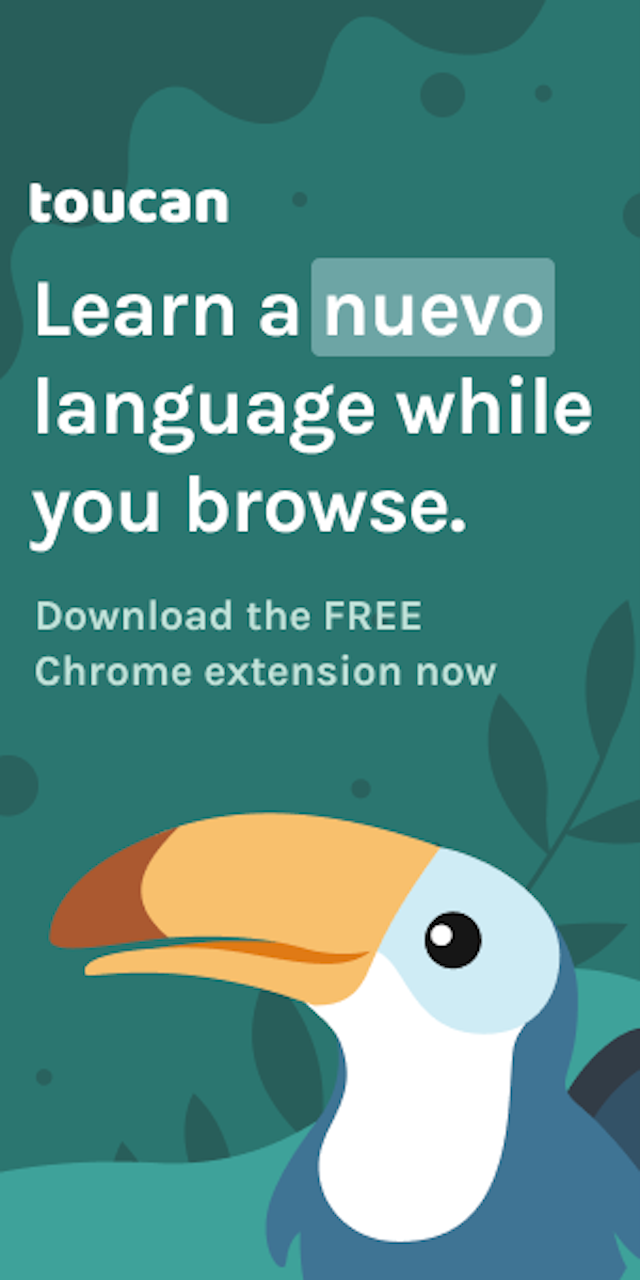


All the information and images are amazing. I thought every person should see all of those once in a life time. Life is short and no one get another chance so one should read good books, listen good songs, see wonderful movies and visit marvels places like these.
Thanks for presenting such a good blog
Hi. Great site just what I was looking for. great advice. great keep it up!